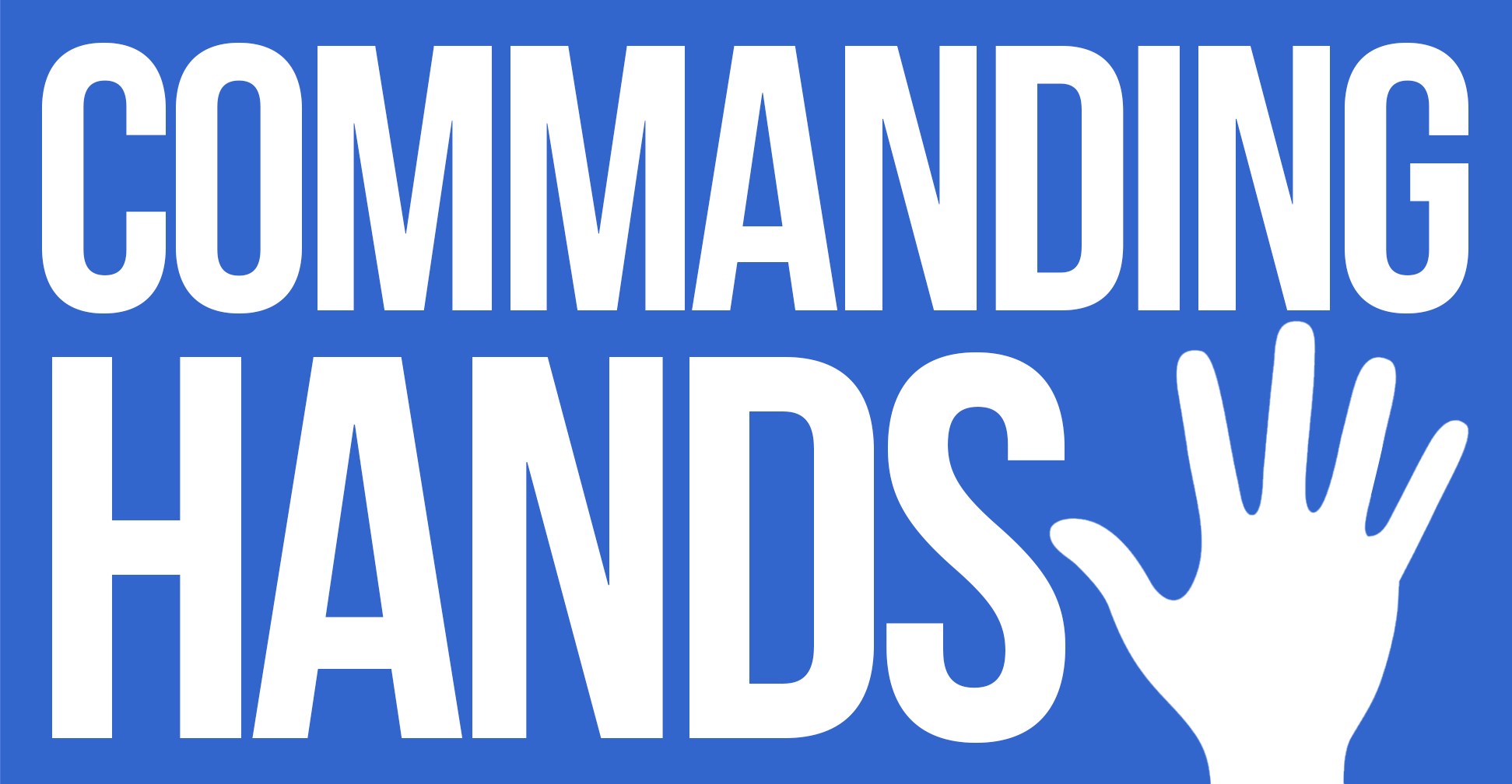Asking questions in BSL is slightly different than in English. The sign, facial expression and sentence structure are of equal importance. Question signs must accompany an inquisitive facial expression to show you are asking a question. Raising or furrowing (lowering) your eyebrows and tilting your head are useful aspects to convey you are asking a question. Collectively, any feature of BSL not relating to the hands are known as non-manual features (NMFs).
Typically, question signs will be signed at the end of a BSL sentence to help with turn-taking in a conversation. The facial expressions associated with asking questions in BSL offer a clear visual clue that you are anticipating a response.
Let’s first look at the signs for questions.
Question signs
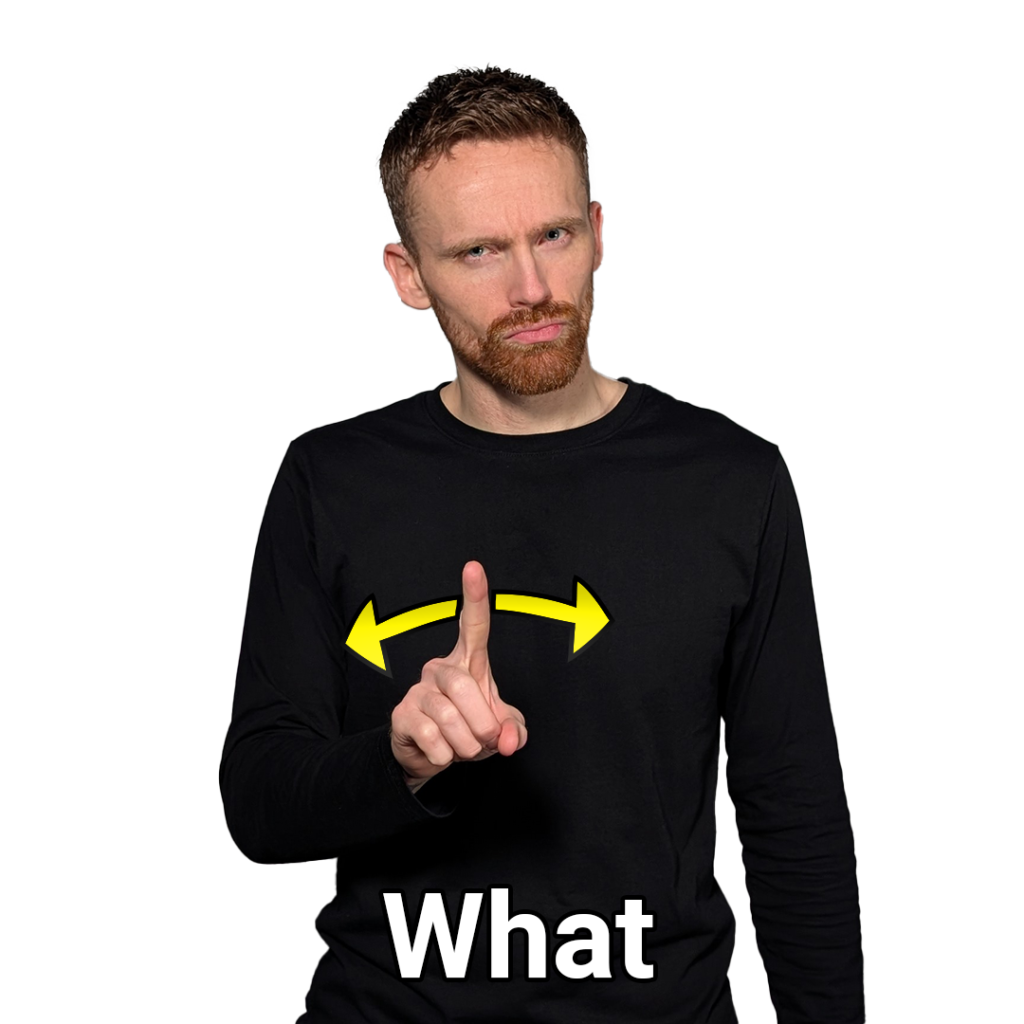
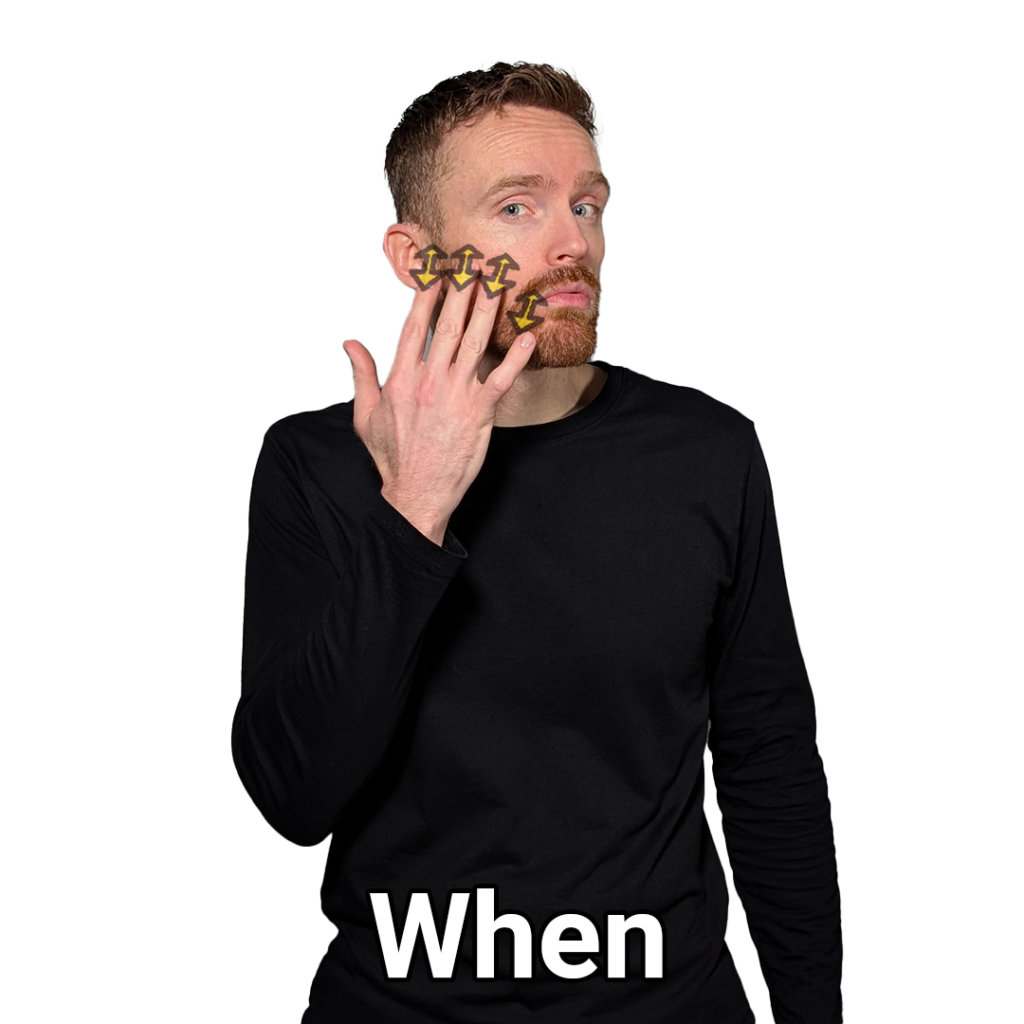
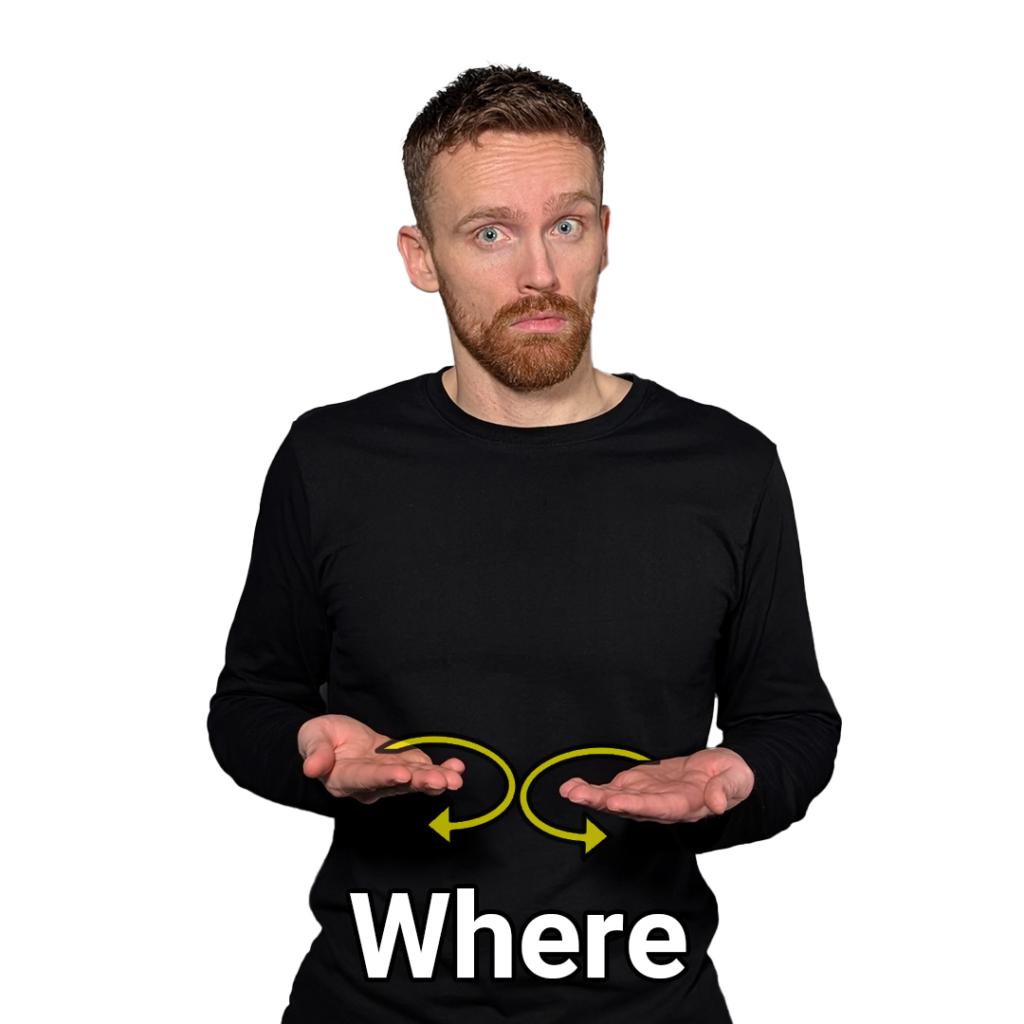
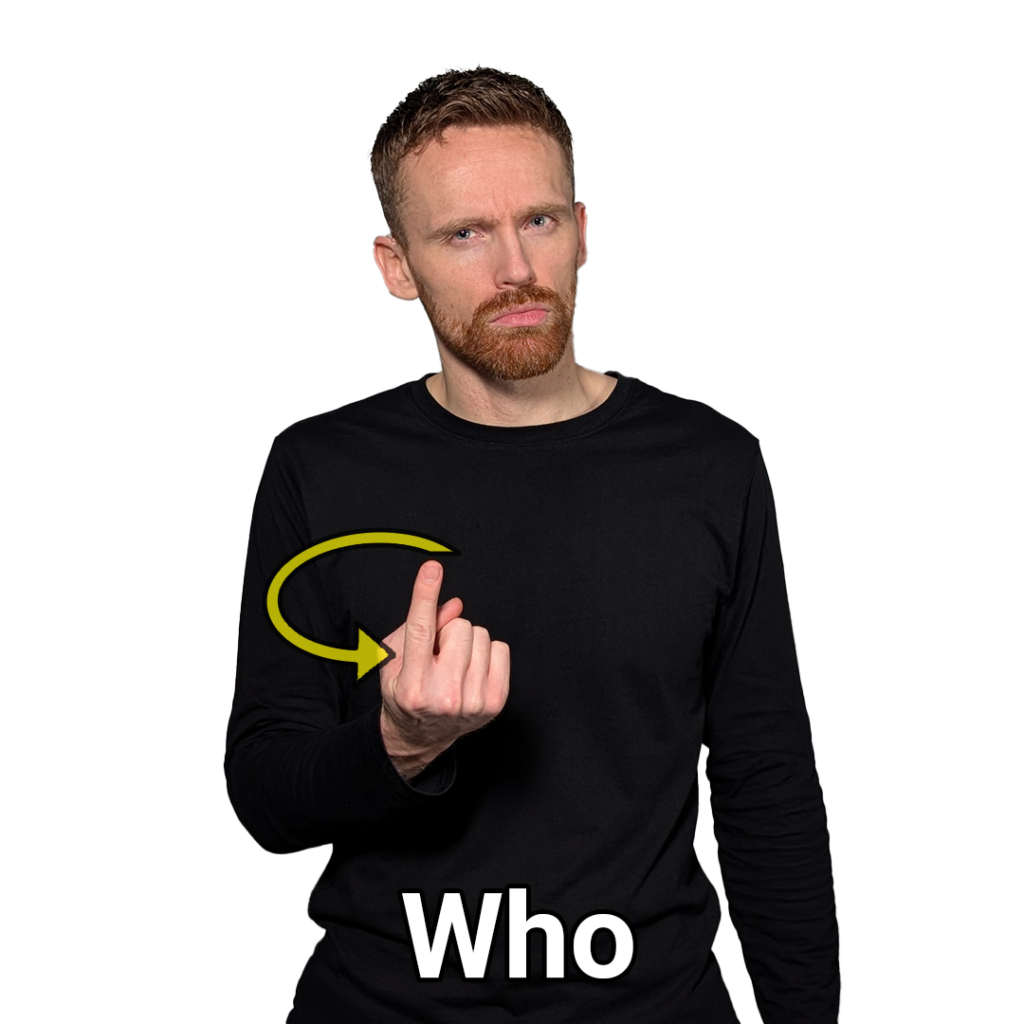
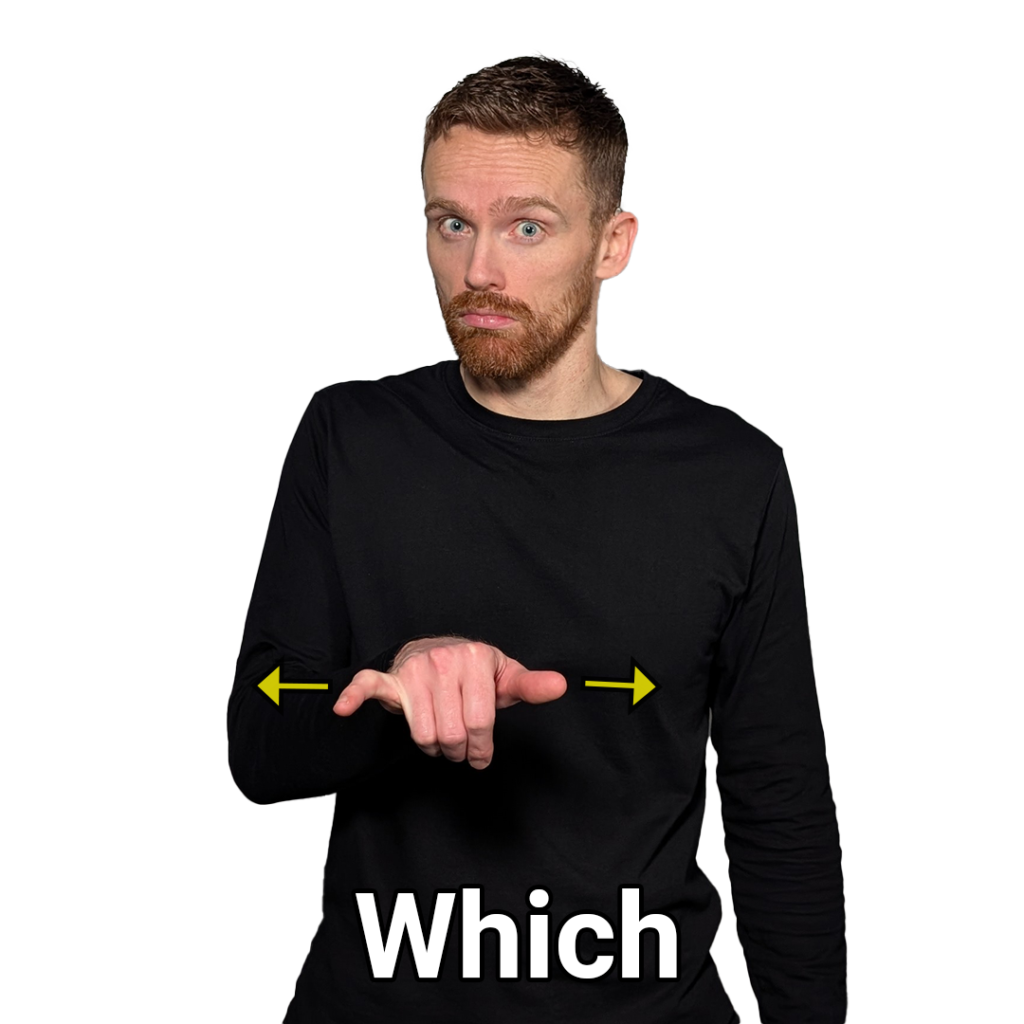
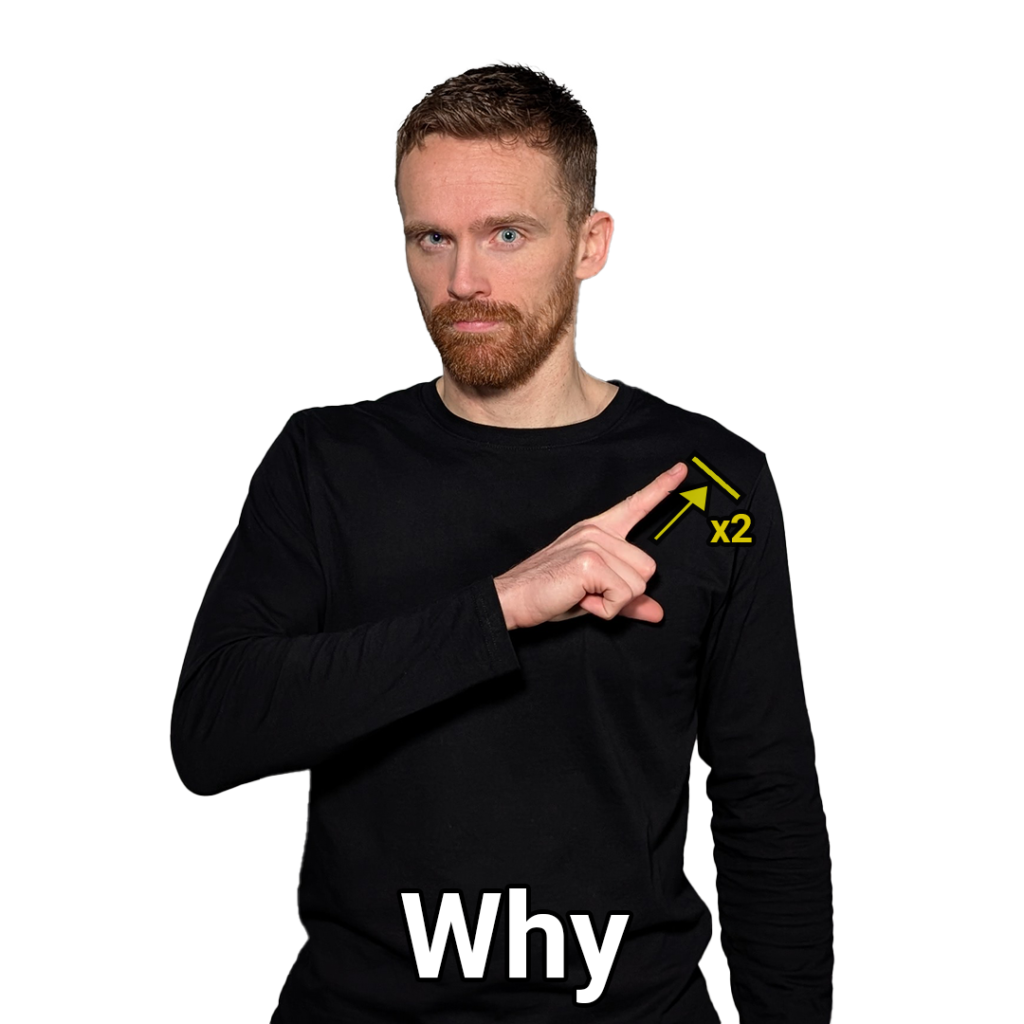
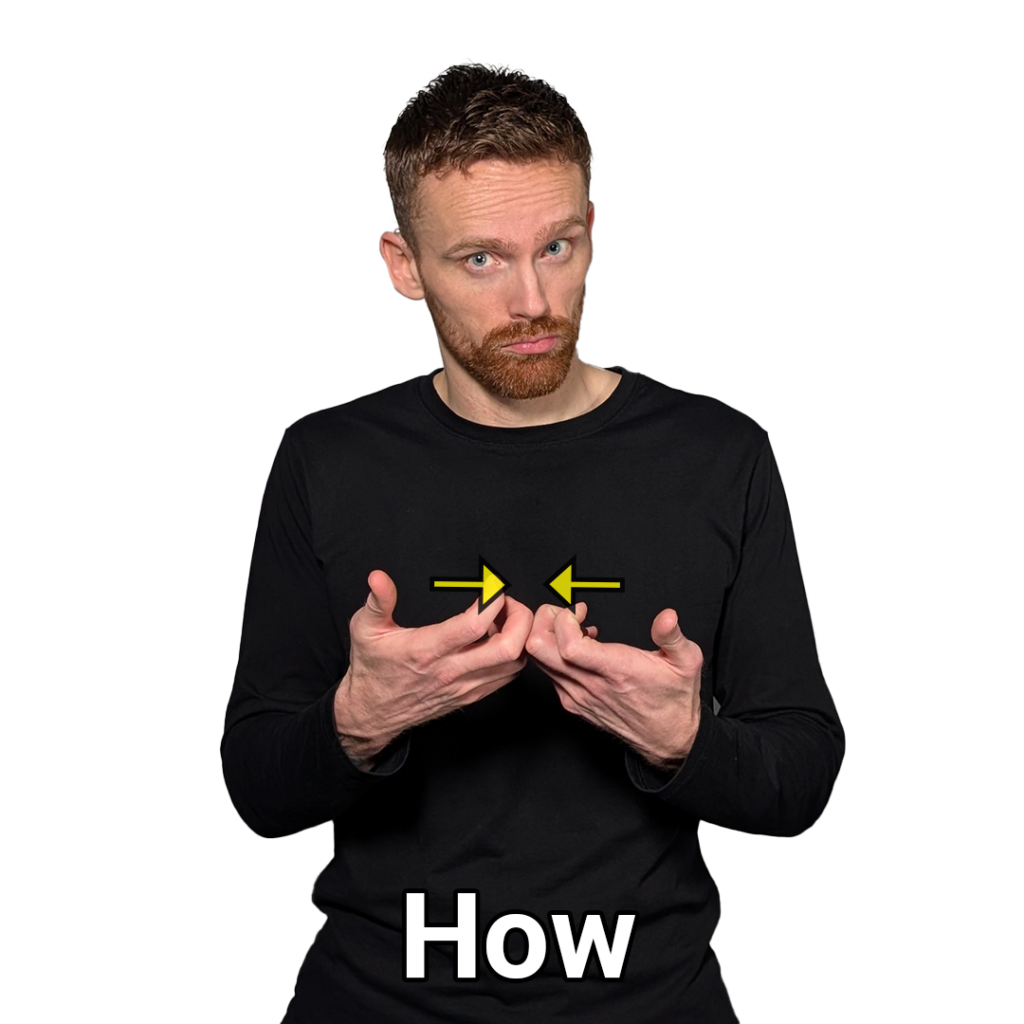
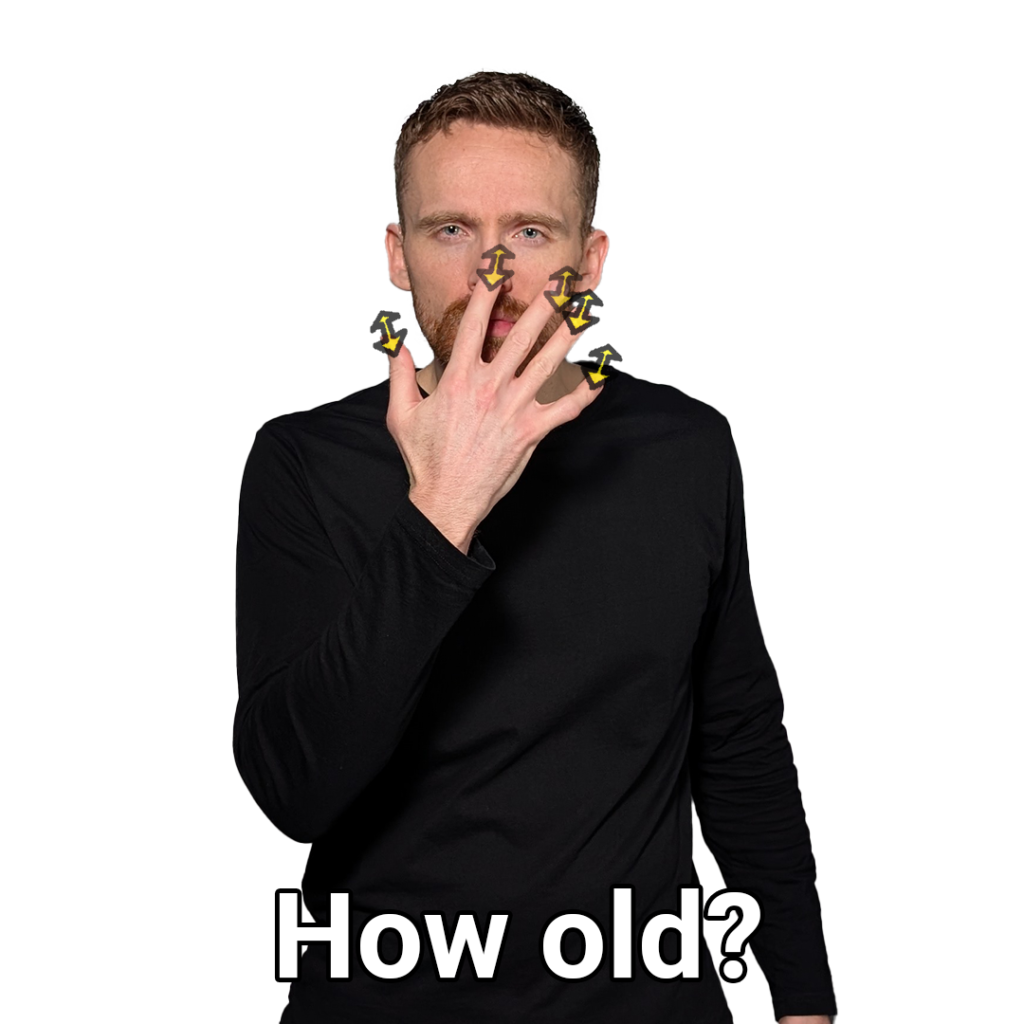
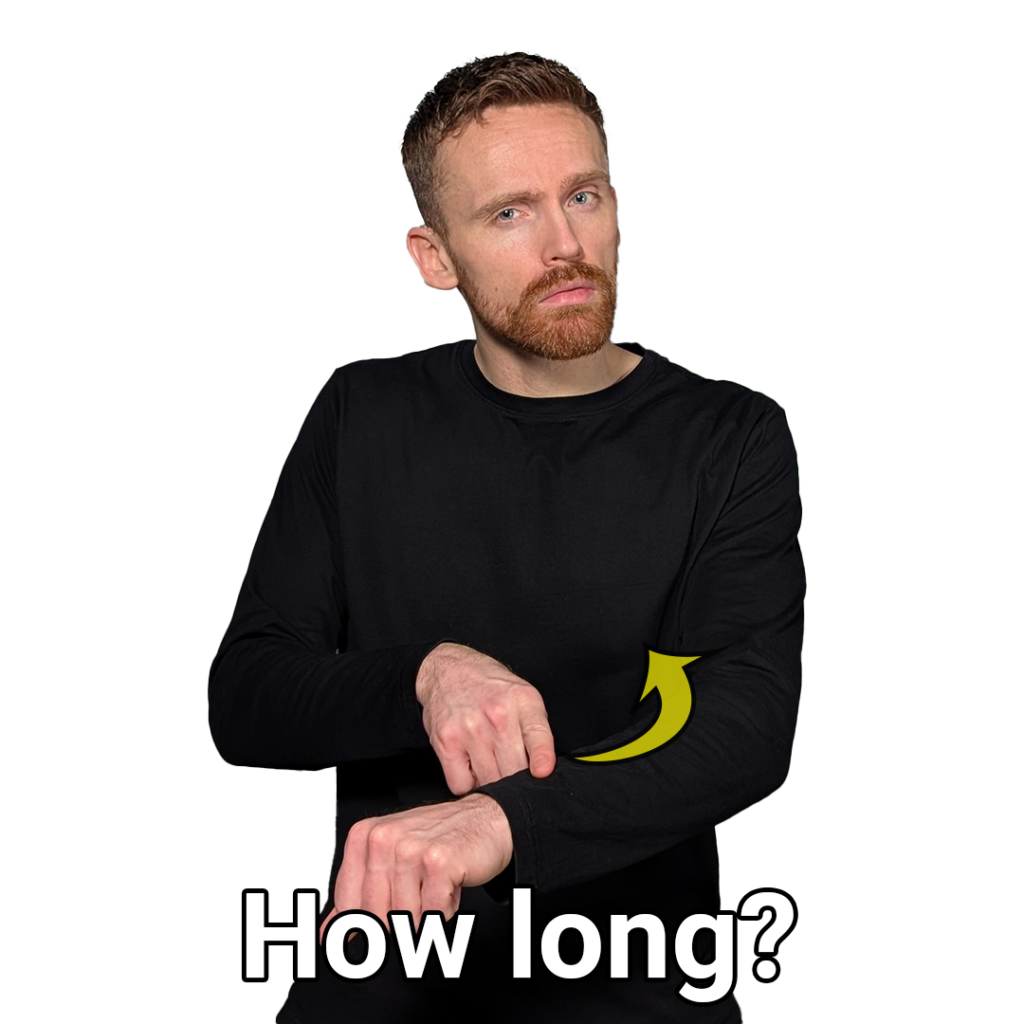
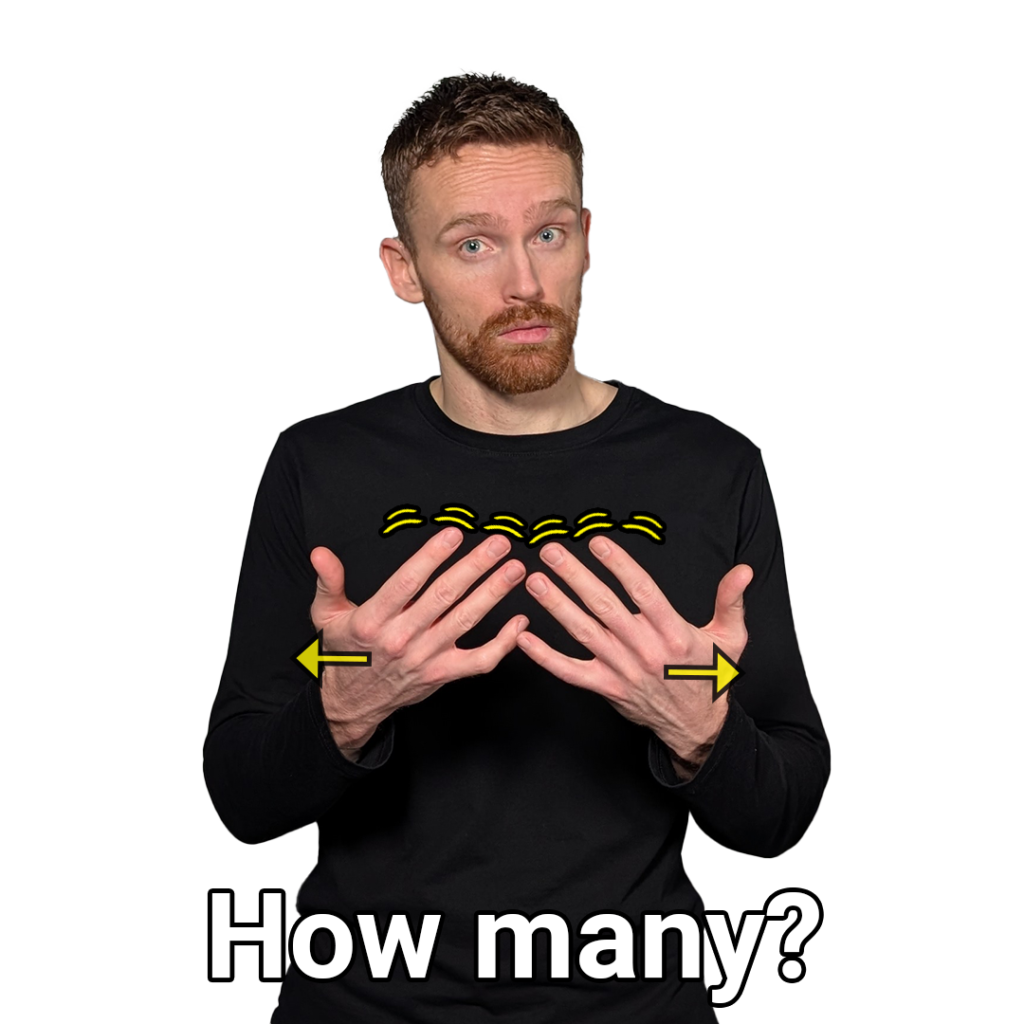
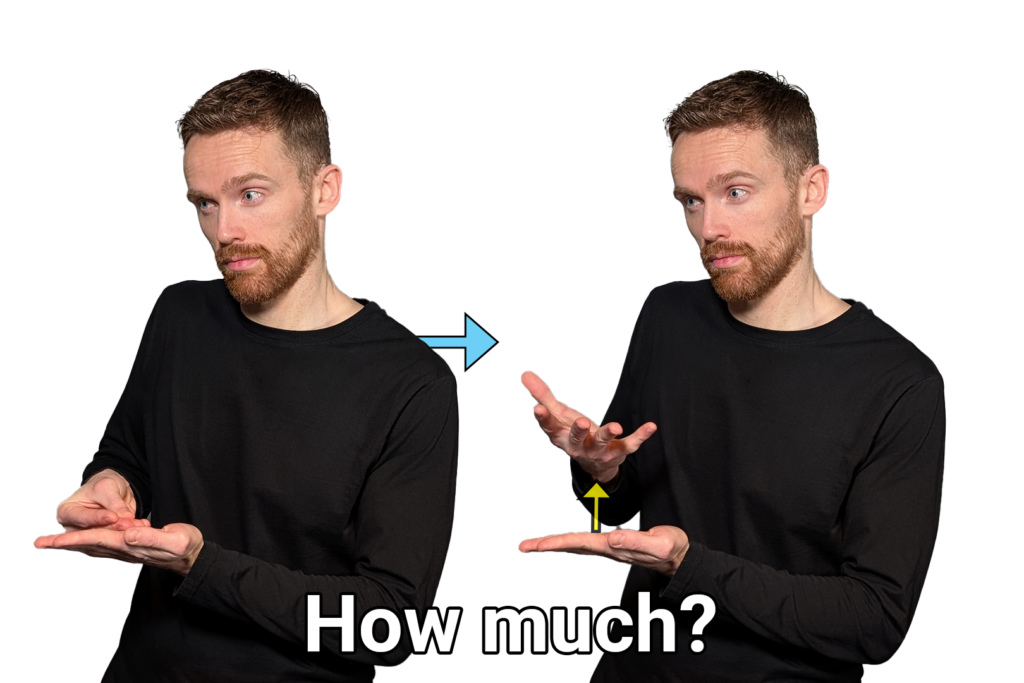
Other ways to ask a question
You don’t always need a specific question sign to ask a question. Your non-manual features can indicate you are asking a question. It’s similar to spoken languages where your tone of voice and an upwards inflection can indicate a question.
For example, if you wanted to ask do you want a drink? there is more than one way to sign the question in BSL. You could sign DRINK YOU WANT?
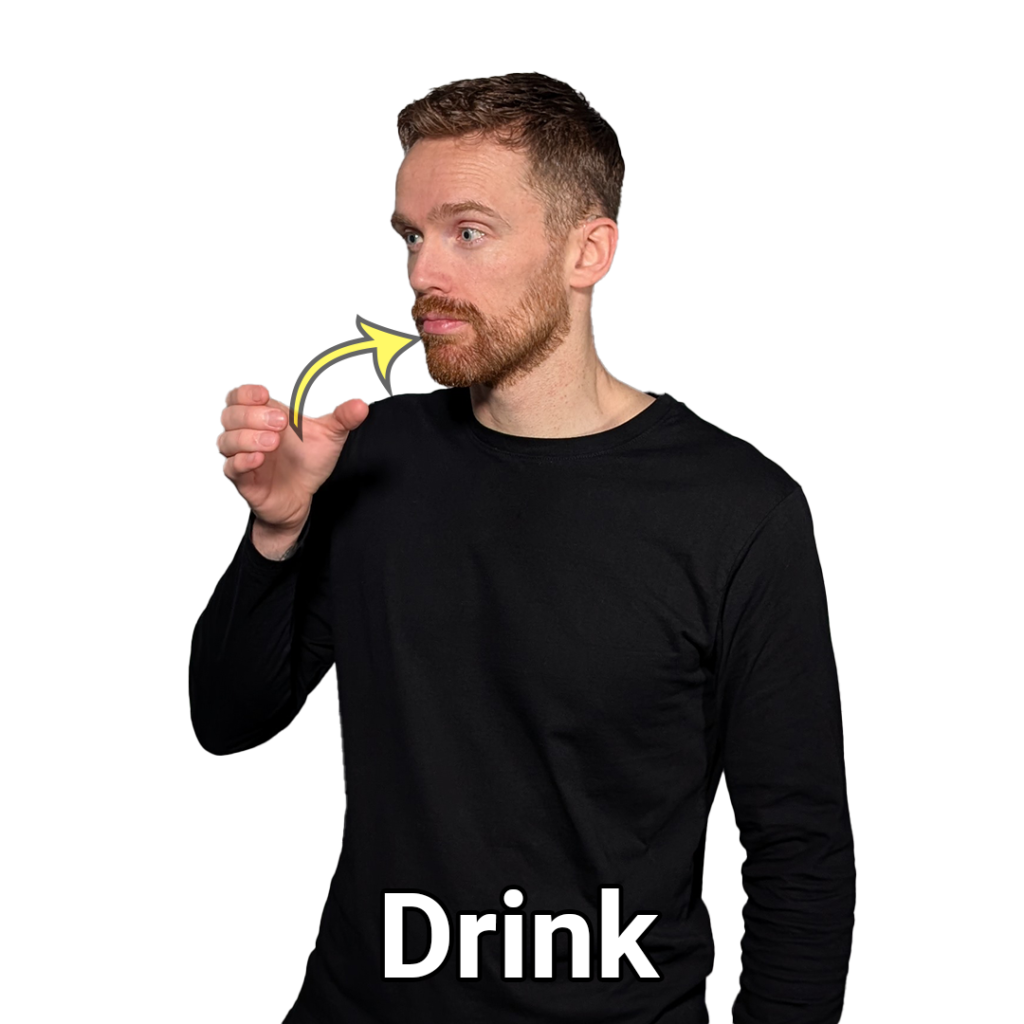
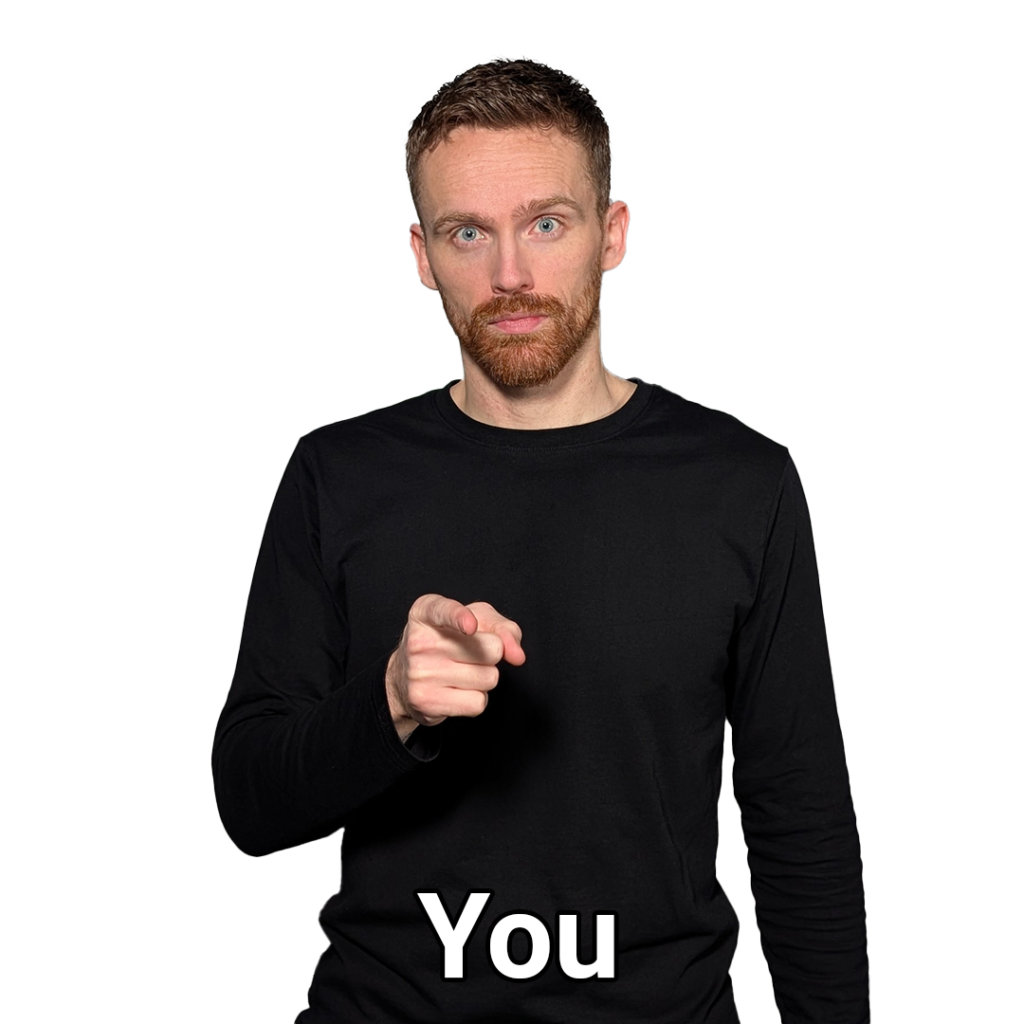
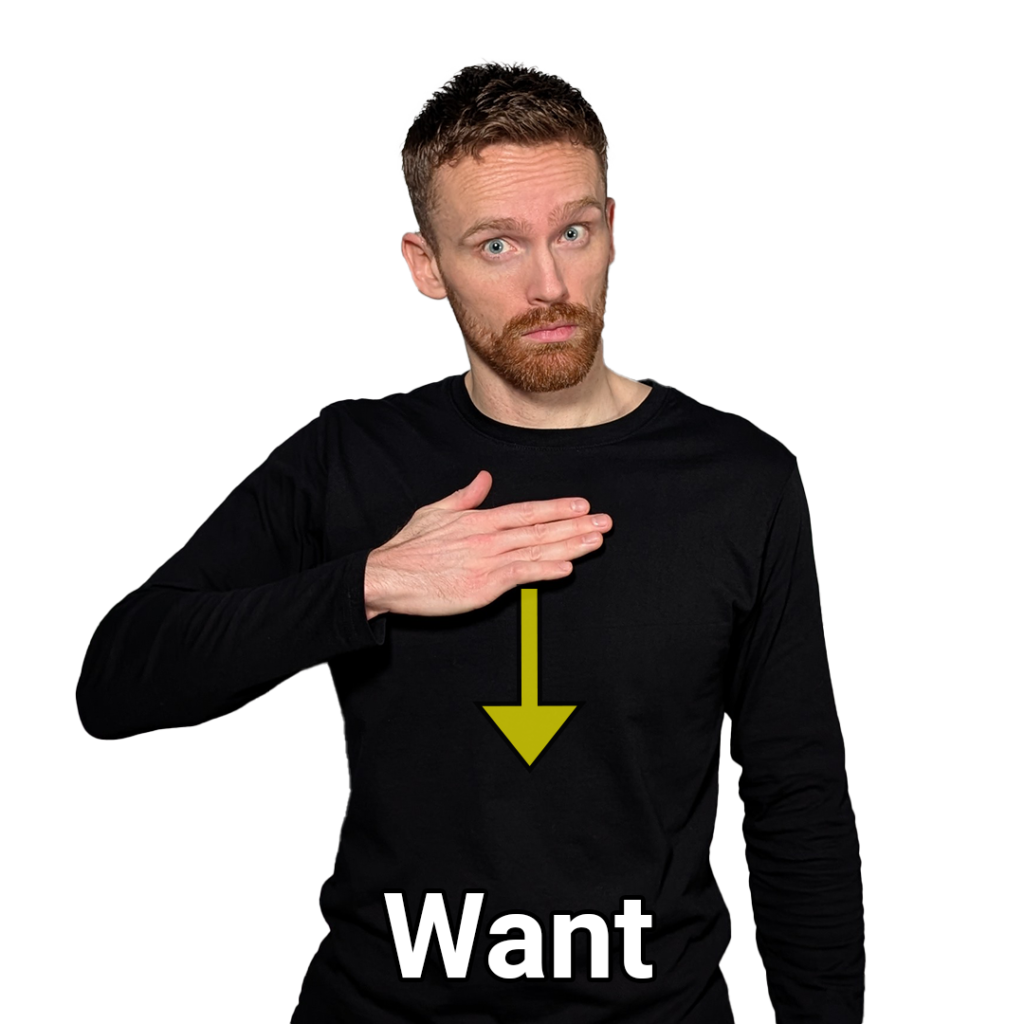
The sign DRINK can be modified through facial expressions to show it is a question. See below.

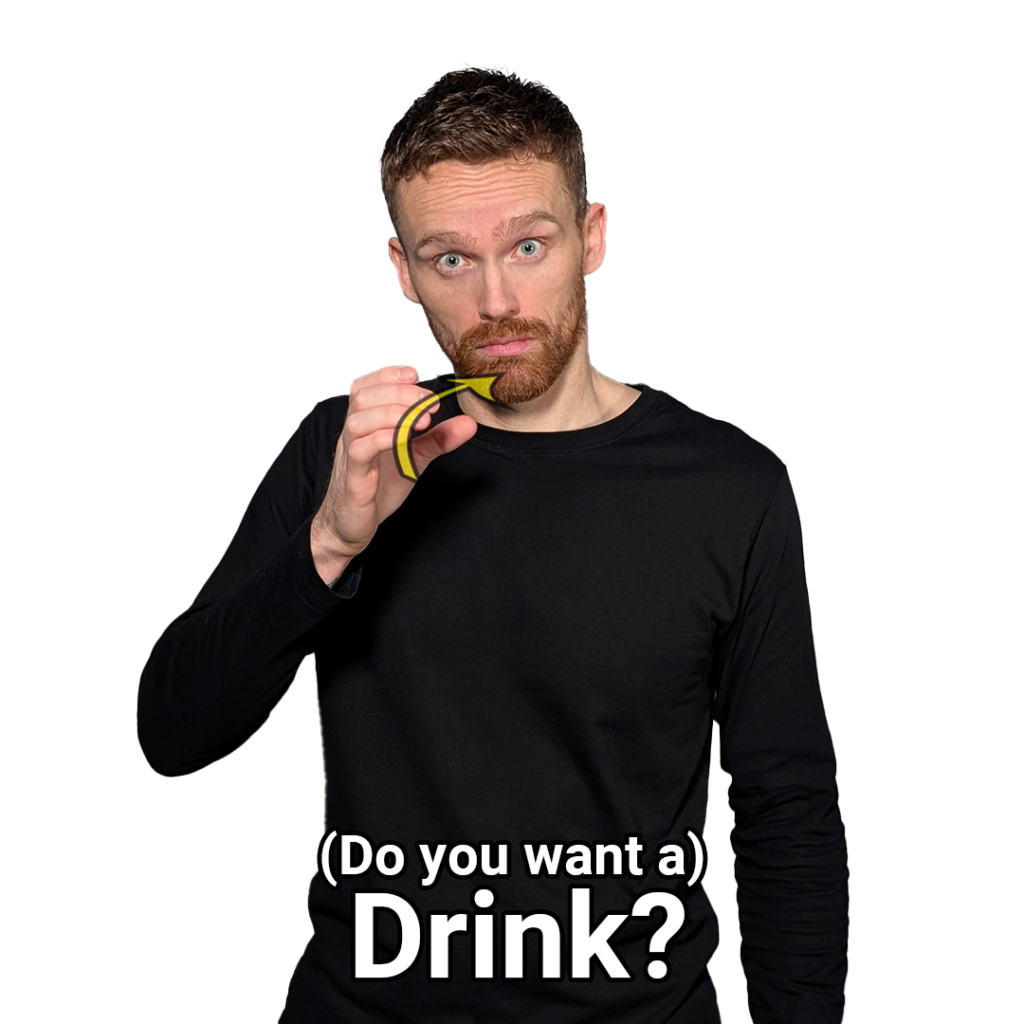
The sign for REAL can be useful in question form, essentially becoming REALLY? This can express surprise, show interest or seek clarification. This sign can also mean TRUE (or in question form, IS THAT TRUE?). More advanced signers may use the lip pattern ALP when using this sign.
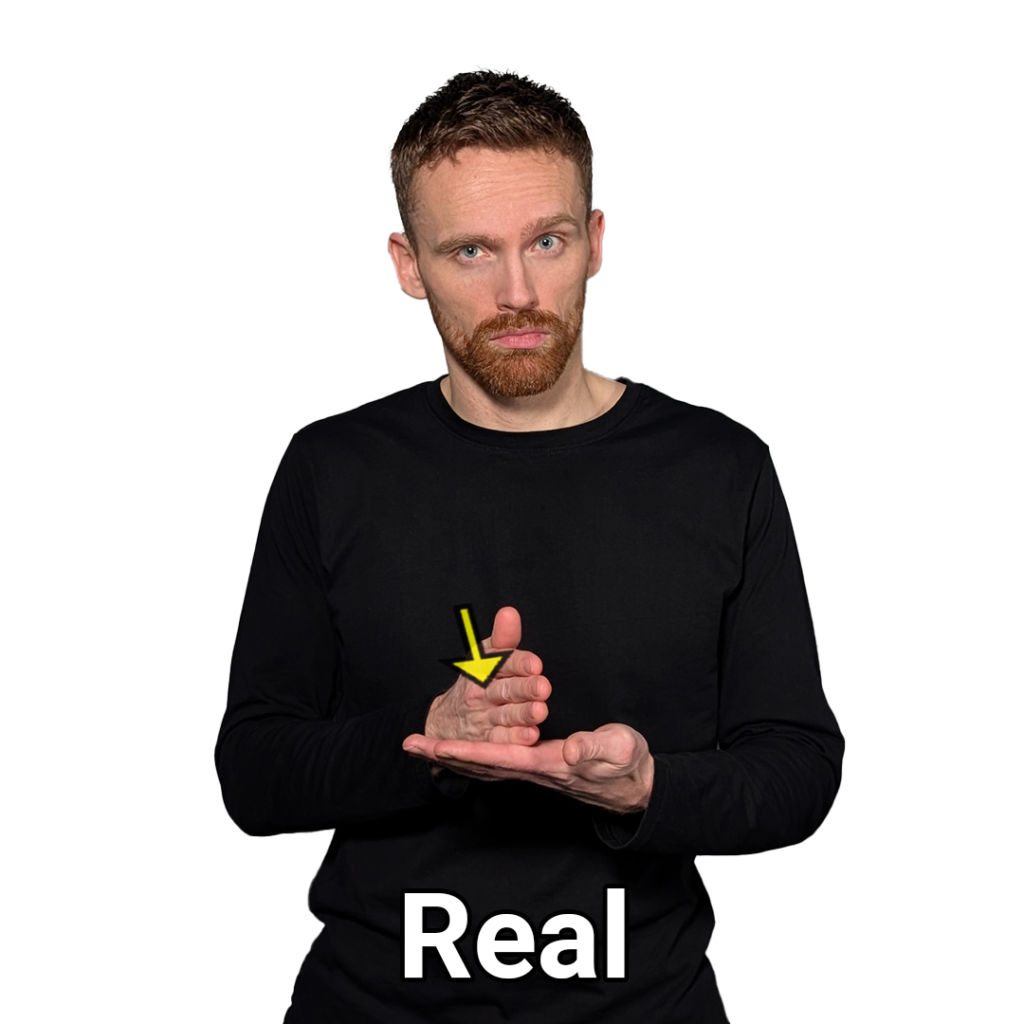
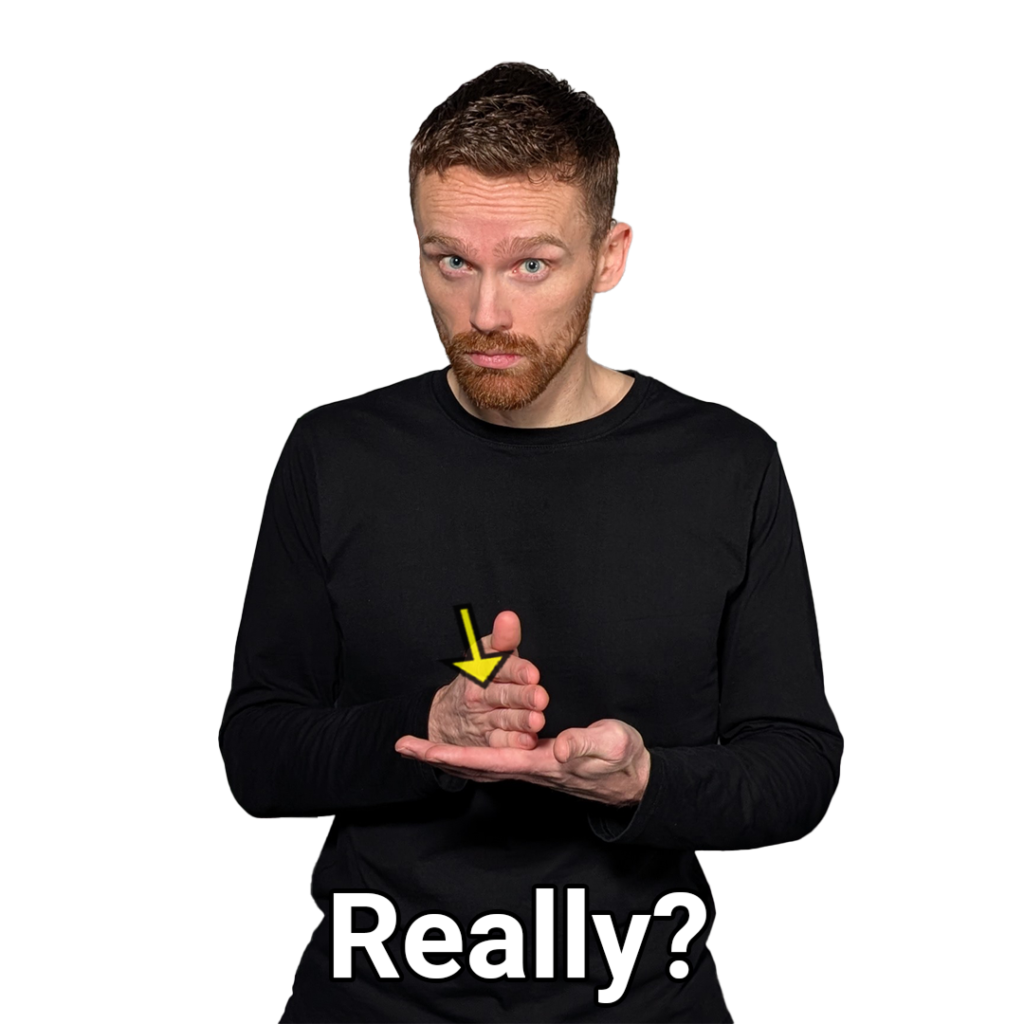
Exercise: Think about how your facial expressions could adjust the meaning for the sign REALLY?
Practice in front of a mirror using this sign but change the meaning of the sign to the following:
1. Expressing scepticism or doubt; imagine someone told you they just jumped 20 feet in the air.
2. Show shock; envision someone telling you they just won the lottery.
3. Express interest in where the story is heading; picture your best friend telling you about a dramatic situation.
How to answer
Questions are useful, but so too are answers! Here’s some common vocabulary to help you answer questions.
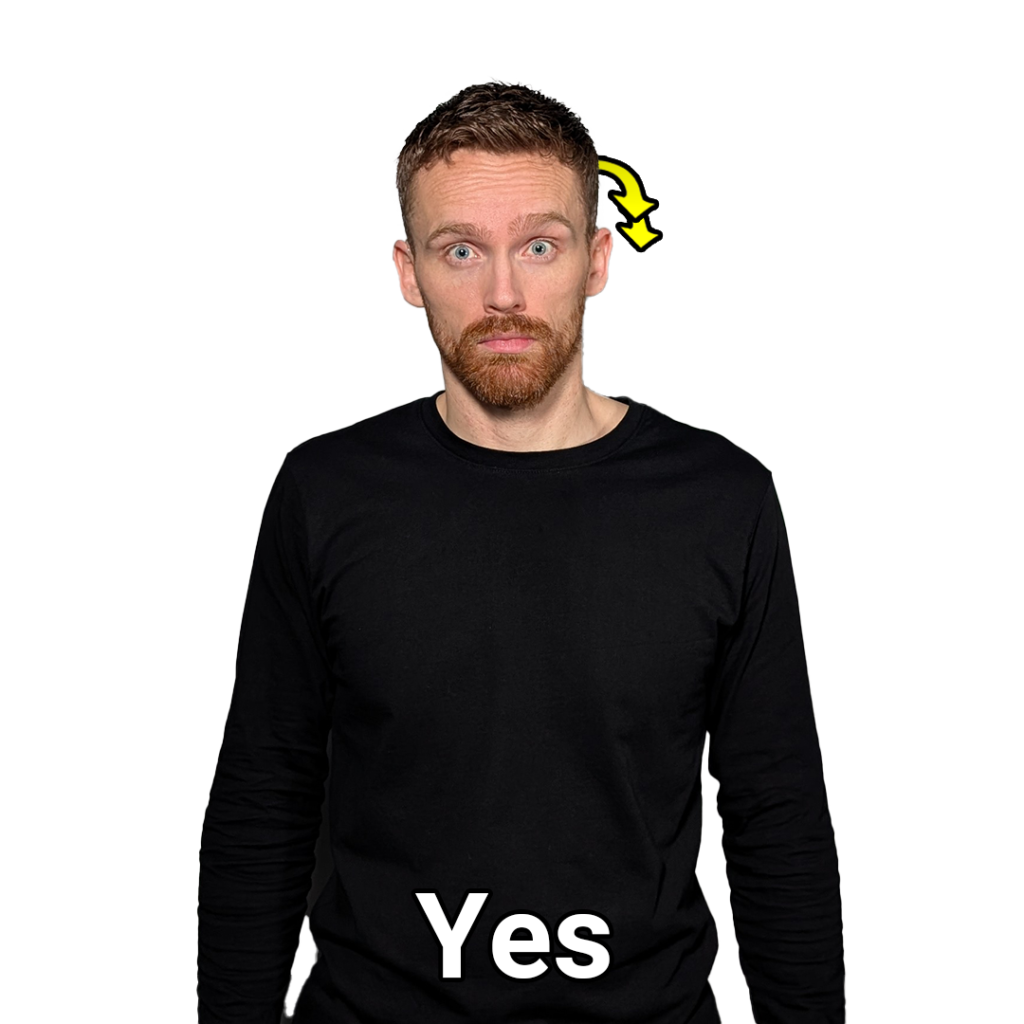
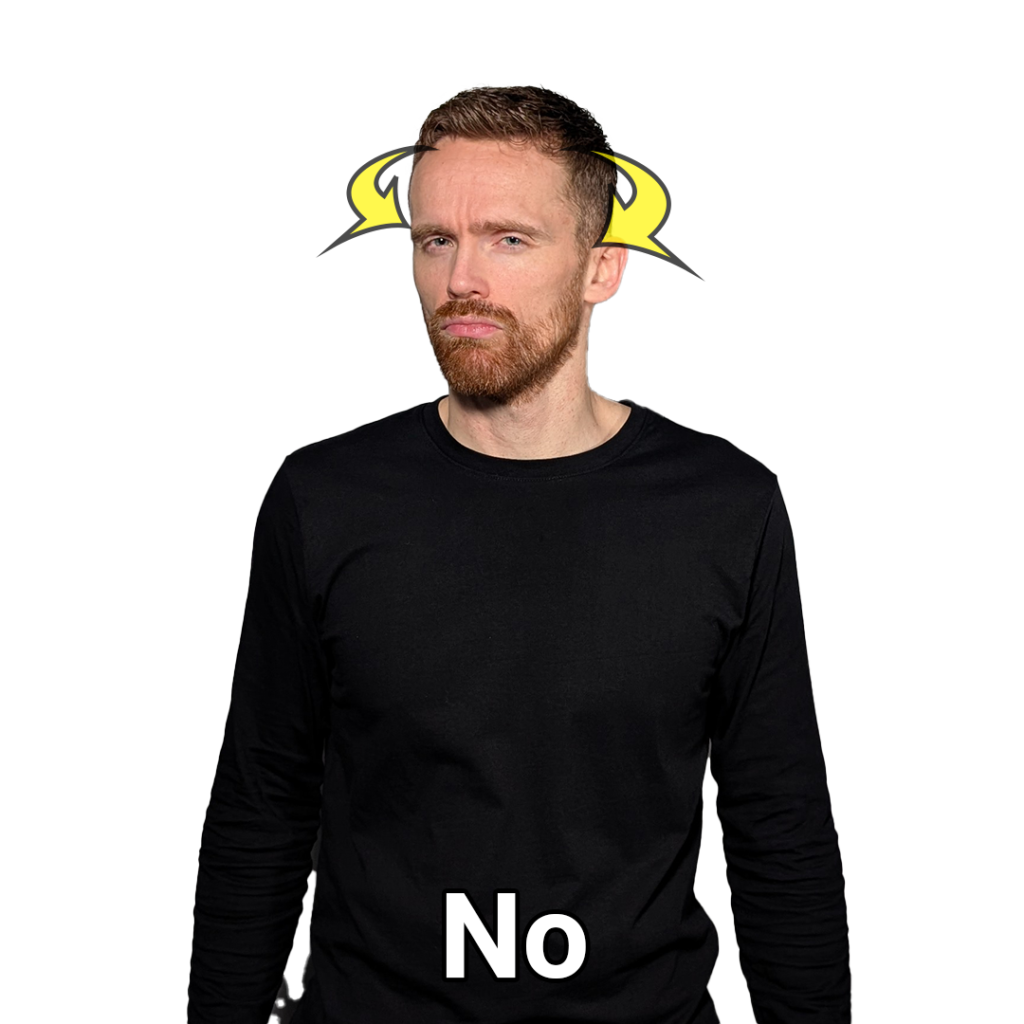
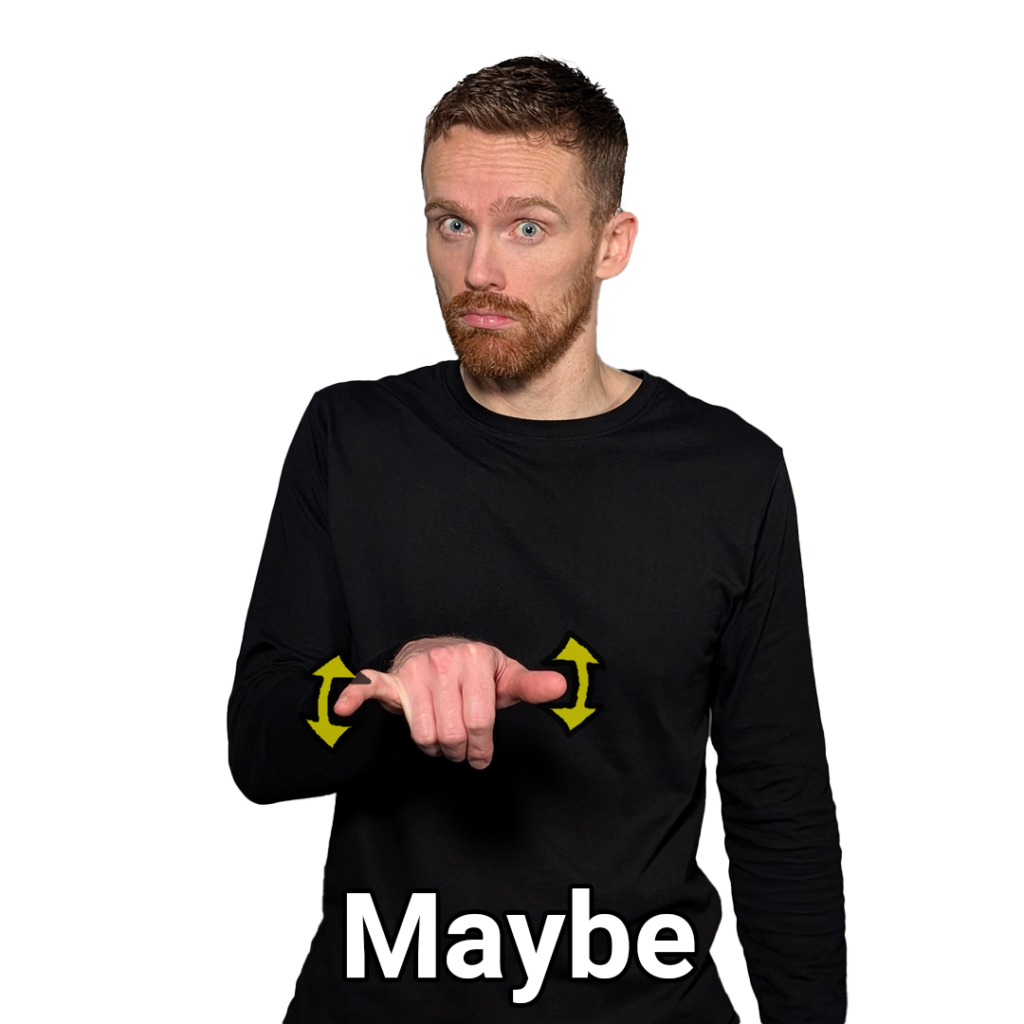
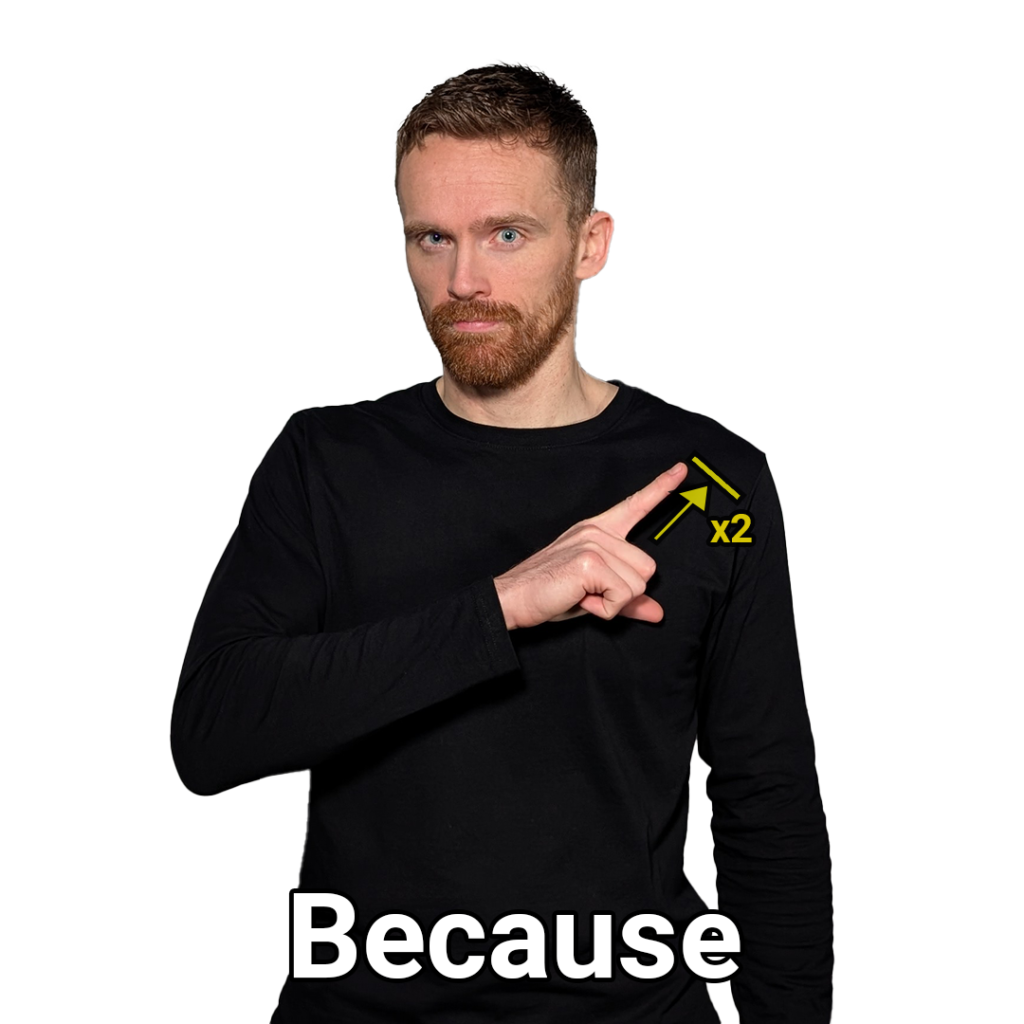
BSL uses “affirmation” to indicate something true, approve, agree or confirm something. This is done by way of nodding your head up and down. Other characteristics could include raising your eyebrows and smiling if the context is appropriate. You should try to use affirmation when using answers with positive intent.
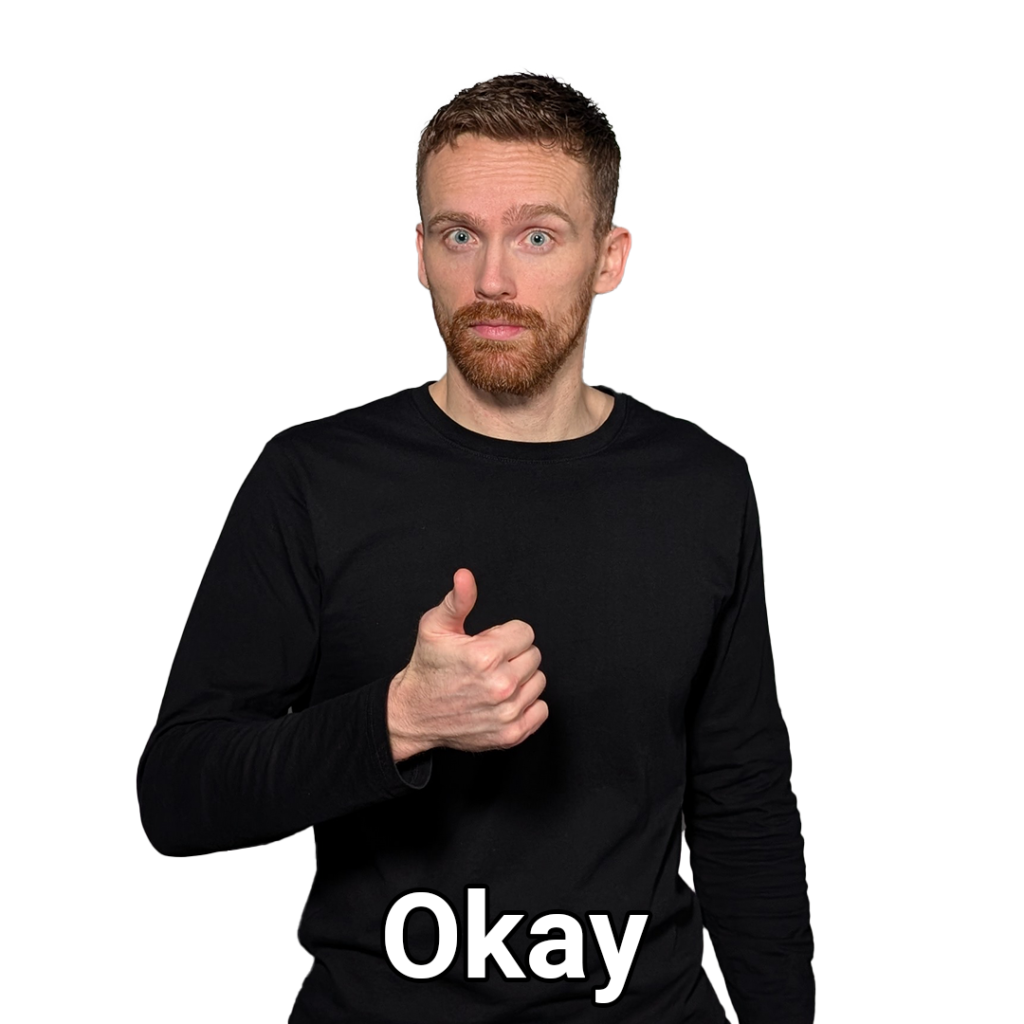
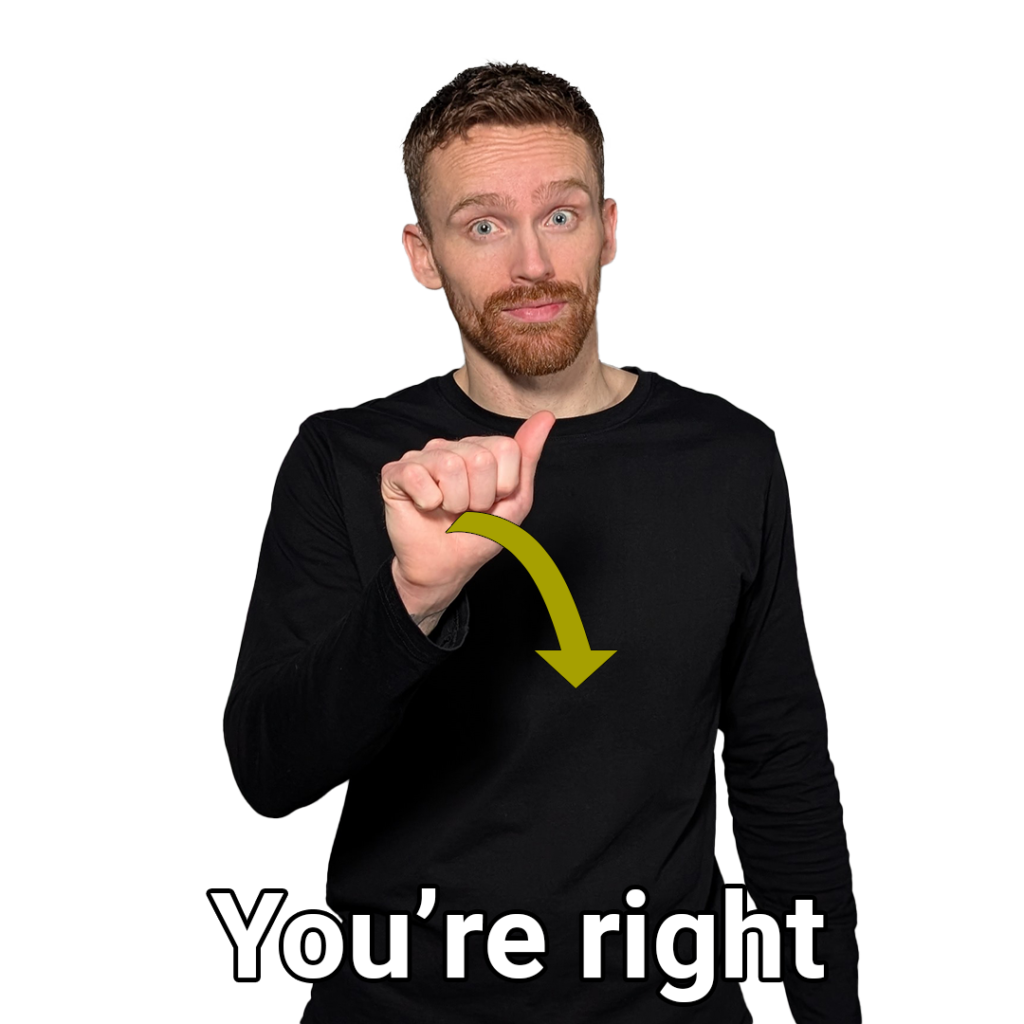
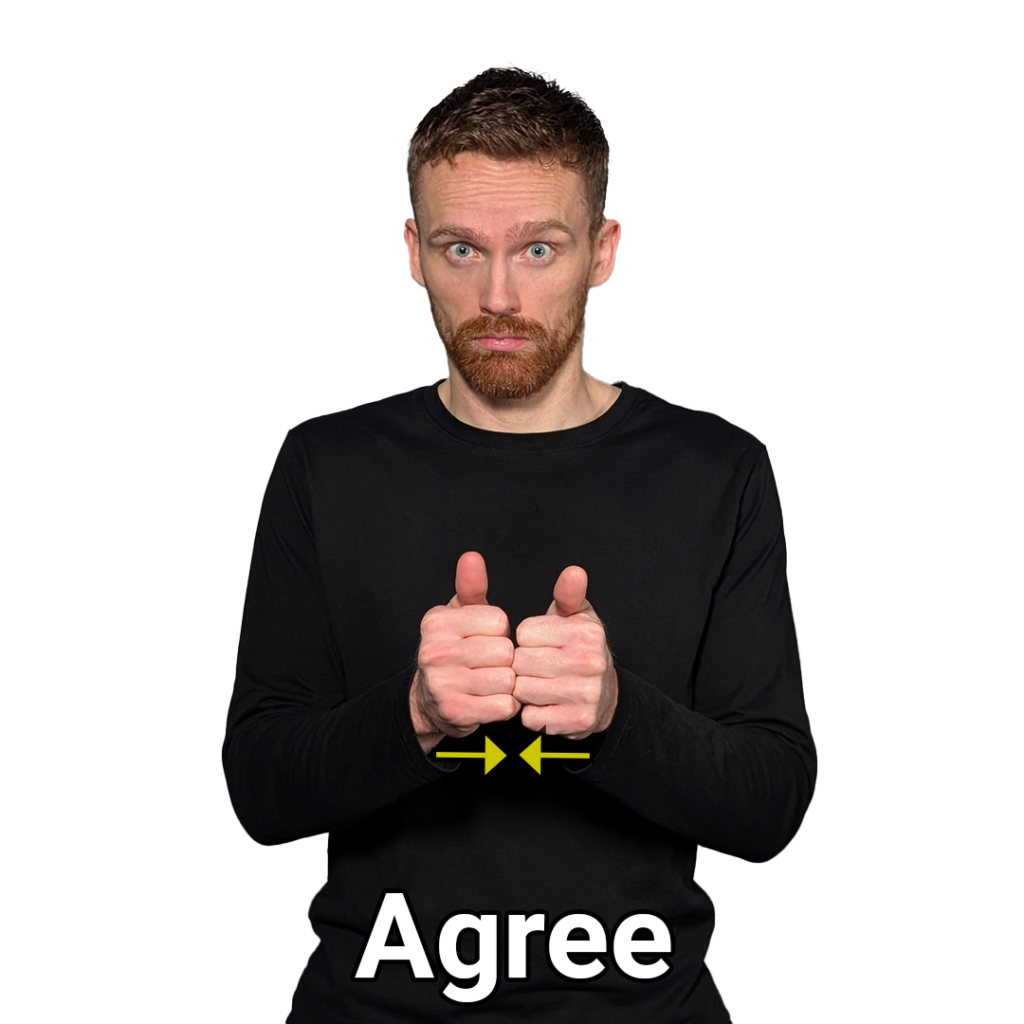
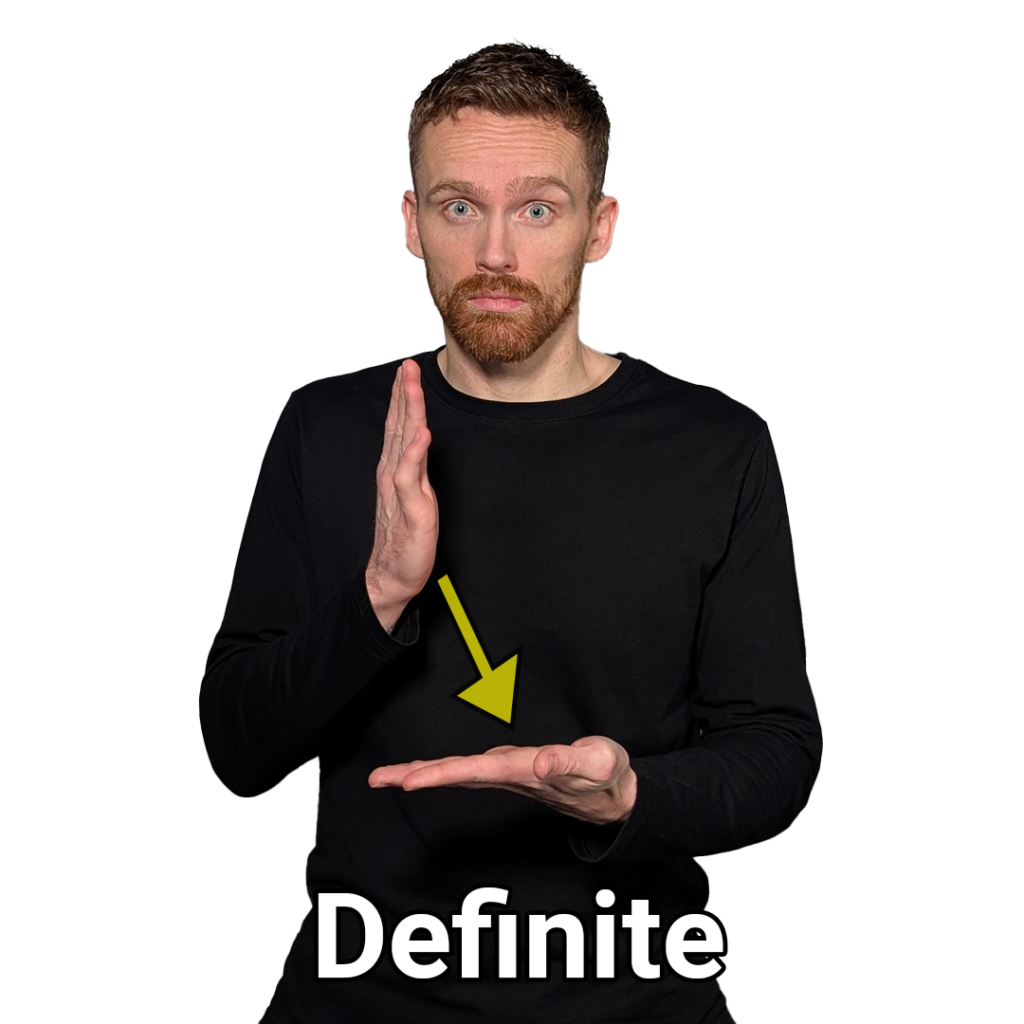
You may have noticed the sign for DEFINITE is the same as REAL. In fact, the signs for TRUE, SURE, REAL and DEFINITE all have the same handshapes and movements. In English these words can also be synonymous if used in the right context. You can mouth the English word as you sign them so the lip pattern helps distinguish the signs. However, it’s more important to think visually. Try and utilise non-manual features and affirmation to add emphasis. Widen your eyes, nod your head more noticeably and you could even quicken the speed of your hand movement. This can show how definite you are (see below).
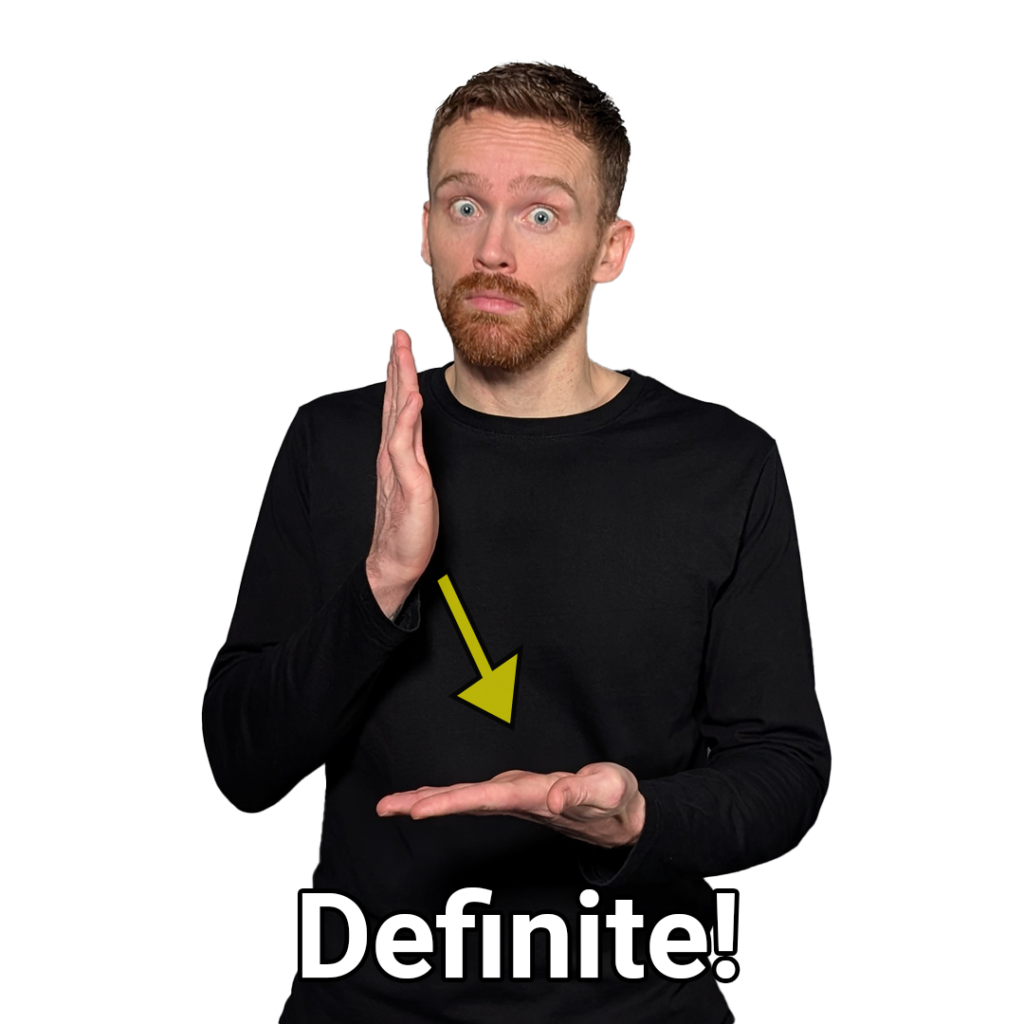
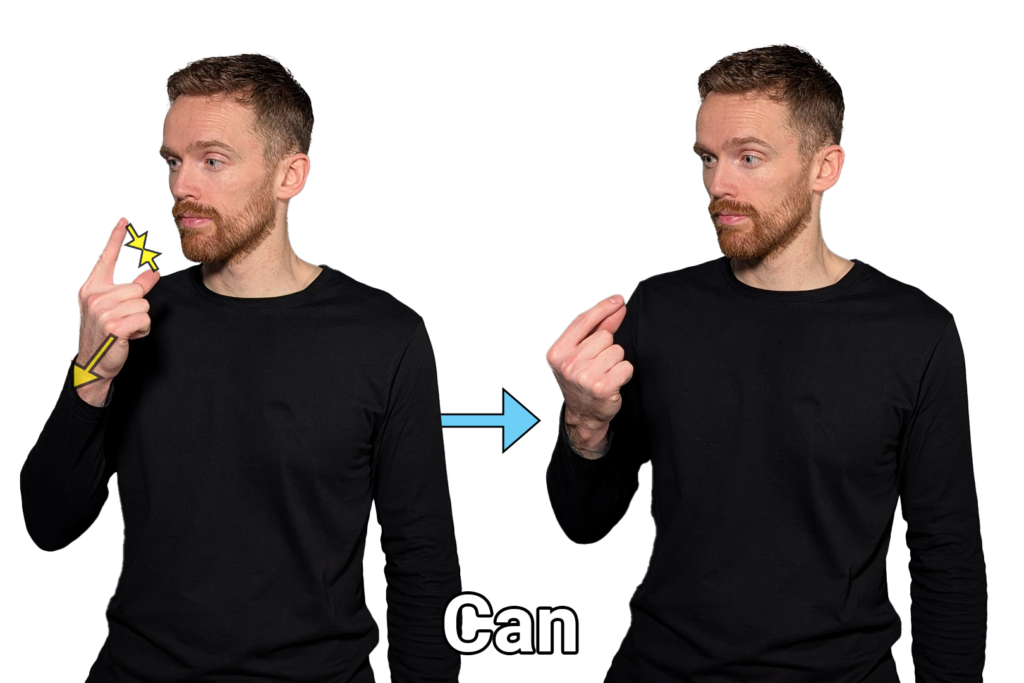
BSL also uses “negation” to indicate something false, deny, reject or contradict something. This is done by way of shaking or turning your head from side-to-side. Other characteristics include furrowing (lowering) your eyebrows, bringing your lips together or winkling your nose. You should try to use negation when using signs with negative intent.
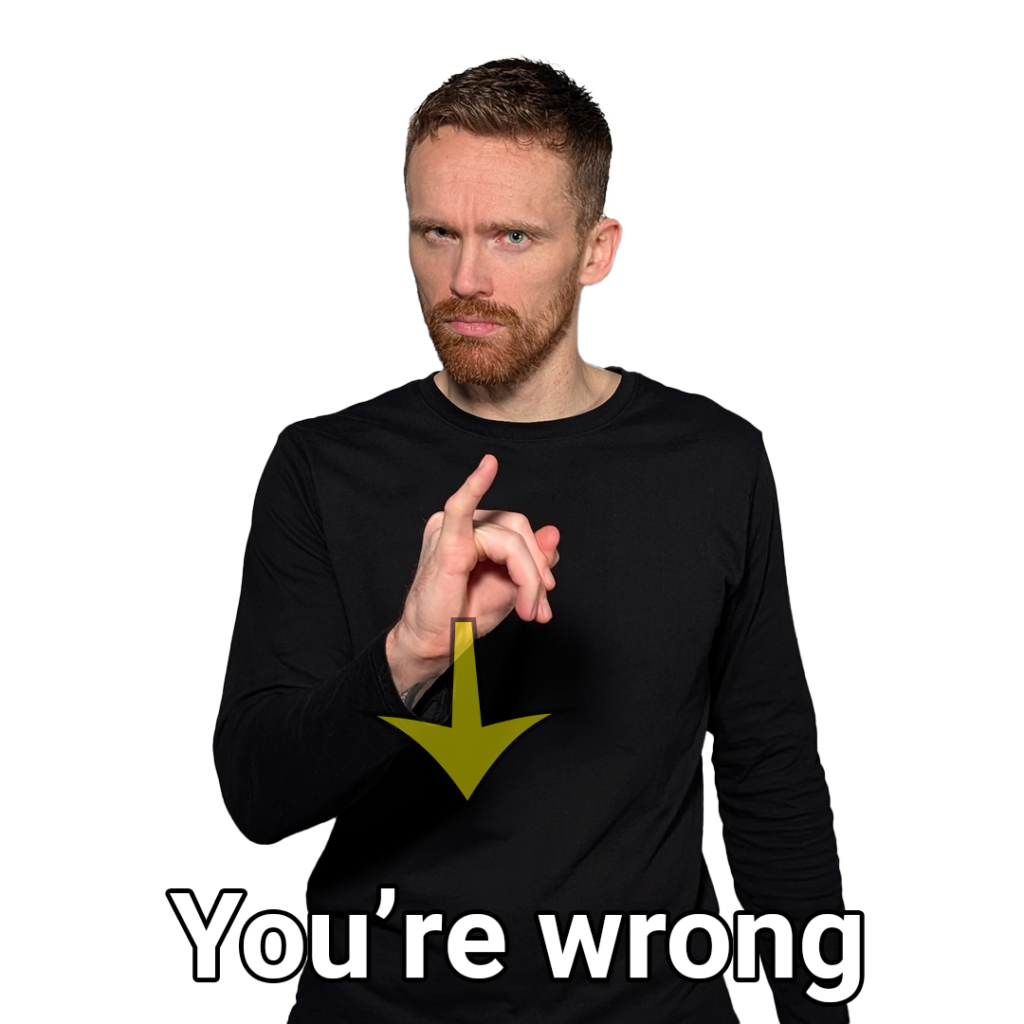
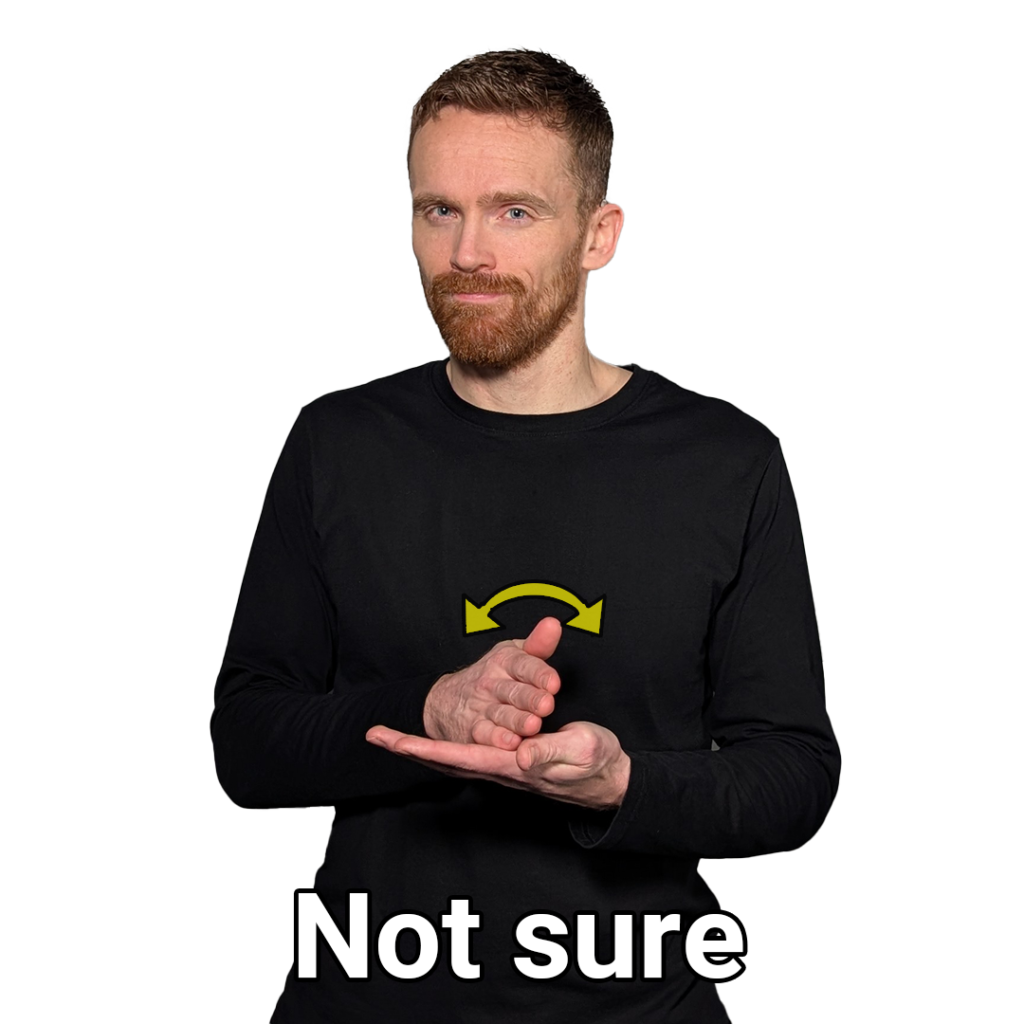
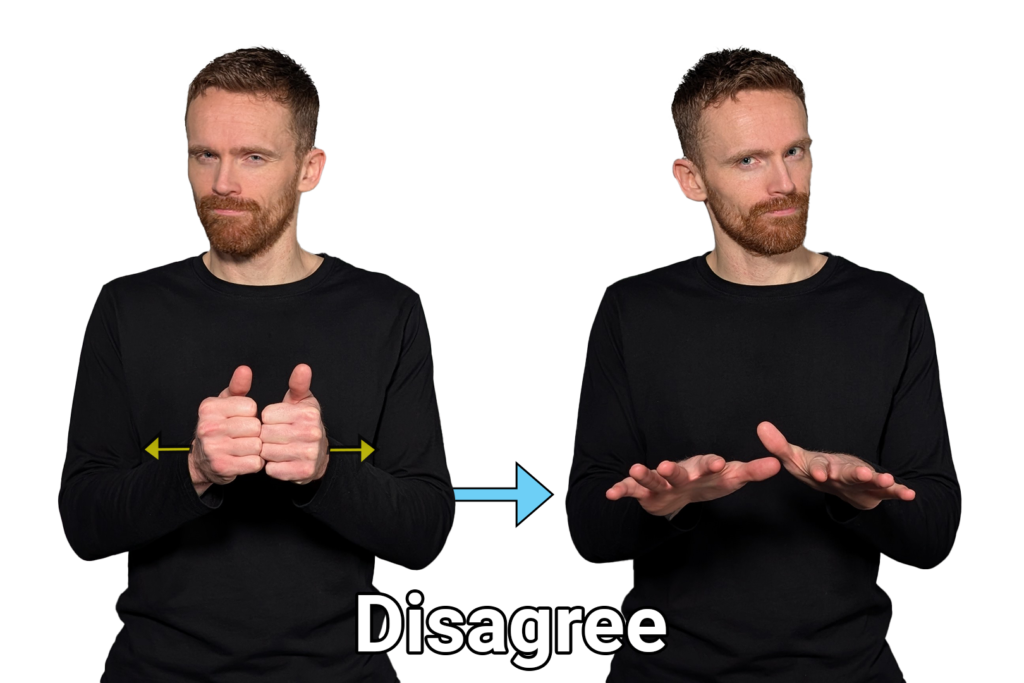
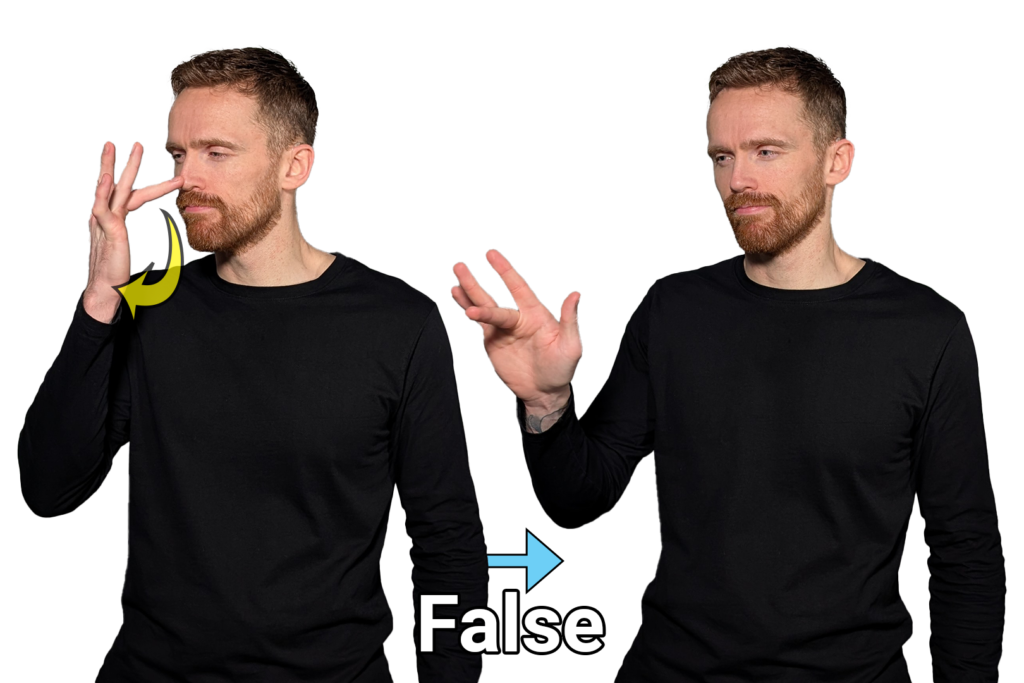
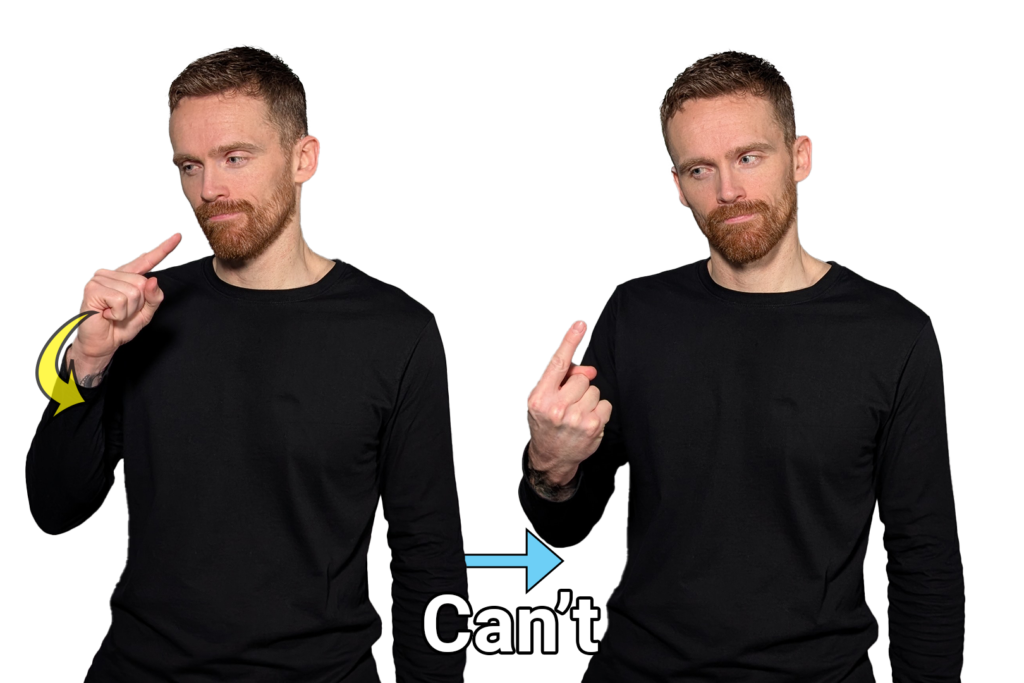
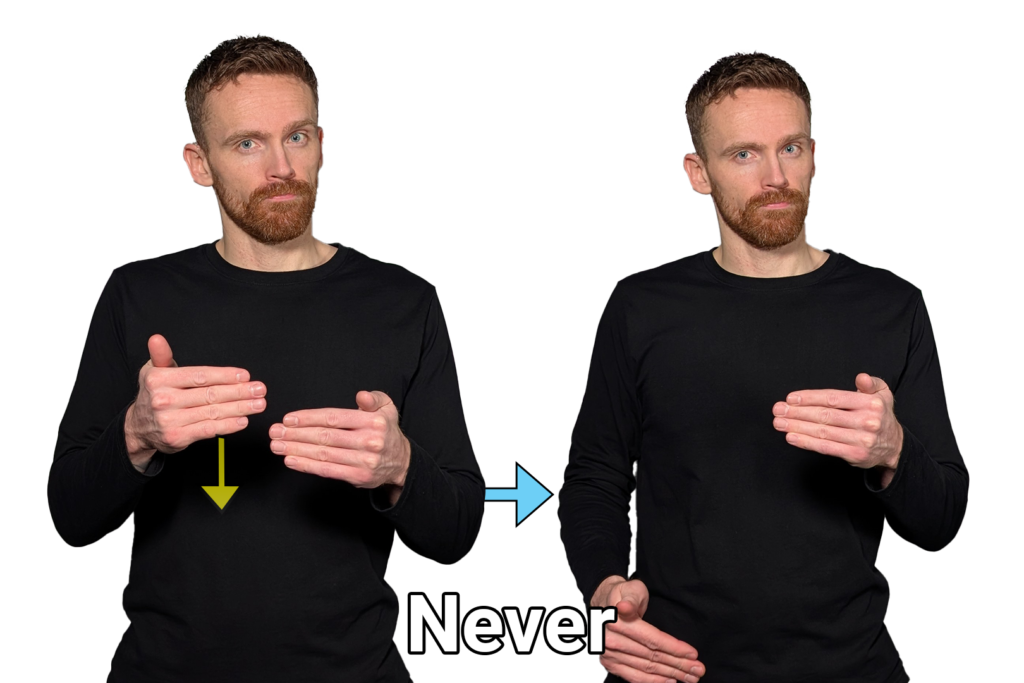
Video demonstration
Example sentences
As mentioned previously, questions are typically signed at the end of BSL sentences to help with turn-taking. Sentences start with the topic to establish context immediately. Sentences may have multiple topics so there is some flexibility in how you approach translating English sentences into BSL which only serves to highlight the depth of BSL. In English you can probably think of various different ways to word the same question.
Here’s some examples of how sentences appear in BSL.
| English | BRITISH SIGN LANGUAGE (BSL) |
|---|---|
| What is the time? | TIME WHAT? |
| What is your name? | NAME YOU WHAT? |
| What is the problem? | PROBLEM WHAT? |
| When are you going to work? | WORK YOU GO WHEN? |
| When is your birthday? | YOUR BIRTHDAY WHEN? |
| When do you go on holiday? | HOLIDAY YOU GO WHEN? |
| Where do you live? | YOU LIVE WHERE? |
| Where are you going? | YOU GO WHERE? |
| Where are the toilets? | TOILET WHERE? |
| Who is that man? | THAT MAN WHO? |
| Who is your wife? | YOUR WIFE WHO? |
| Who are you? | YOU WHO? |
| Why are you late? | YOU LATE WHY? |
| Why is he angry? | HIM ANGRY WHY? |
| Why are you laughing? | YOU LAUGH WHY? |
| Which do you prefer, coffee or tea? | COFFEE TEA YOU PREFER WHICH? |
| Which ice cream do you want? | ICE CREAM YOU WANT WHICH? |
| How did you arrive here? | YOU ARRIVE HOW? |
| How do I bake a cake? | CAKE BAKE HOW? |
| How old are you? | YOU HOW OLD? |
| How much is that? | THAT HOW MUCH? |
| How long do you work? | YOU WORK HOW LONG? |
| How many people were at the party? | PARTY PEOPLE THERE HOW MANY? |
Exercise: Change these English sentences into BSL sentences (don’t worry if you don’t know the signs for them yet)
1. What is your address?
2. Who is that boy?
3. Where do you live?
4. Which do you prefer, biscuits or cake?
5. How old is your mum?
6. How much is a coffee?
7. How many dogs do you have?
8. Why are you happy?
9. Do you want a coffee?
10. Is that true?
Scroll down for the answers.
Good to know
It is possible to use a question sign twice in a sentence, once at the start of a sentence and once more at the end. This could be a technique to add emphasis, for example WHY LIE WHY could highlight the confusion over why someone would lie.
You can use rhetorical questions to help BSL sentences. This could help highlight a point you wish to make clear or be useful if you wanted to build suspense when telling a story. For example, MY BIRTHDAY WHEN? 11TH JANUARY or ME START WORK TIME WHAT? 4AM!
Typically you should lower (or furrow) your eyebrows with closed questions and raise them for open questions. It is important to move your eyebrows either way to indicate a question.
ANSWERS (There are more acceptable ways to translate a sentence, the important part of the exercise is getting used to moving the questions to the end of the sentences and removing the English connecting words that are unnecessary in BSL).
1. What is your address? is signed YOUR ADDRESS WHAT?
2. Who is that boy? is signed THAT BOY WHO?
3. Where do you live? is signed YOU LIVE WHERE?
4. Which do you prefer, biscuits or cake? is signed BISCUITS OR CAKE YOU PREFER WHICH?
5. How old is your mum? is signed YOUR MUM HOW OLD?
6. How much is a coffee? is signed COFFEE HOW MUCH?
7. How many dogs do you have? is signed DOGS YOU HAVE HOW MANY?
8. Why are you happy? is signed YOU HAPPY WHY?
9. Do you want a coffee? is signed COFFEE YOU WANT? or COFFEE?
10. Is that true? is signed TRUE?
Key points to remember
1. Use non-manual features to show you are asking a question; facial expressions integral in BSL particularly when asking questions.
2. Move question signs to the end of a BSL sentence which helps with turn-taking in conversations.
3. There’s more than one way to translate an English sentence into BSL.
Useful downloads and links
